ORIENT EXPRESS

BRUNSWICK SCHOOL / 2023
UNITY through IDENTITY



BRUNSWICK SCHOOL / 2023
Brunswick Upper School | 100 Maher Ave. Greenwich, CT
www.brunswickschool.org
203-485-3670
Cover art: Charlie Vincent ’24 (Cardboard)


UNITY through IDENTITY



Brunswick Upper School | 100 Maher Ave. Greenwich, CT
www.brunswickschool.org
203-485-3670
Cover art: Charlie Vincent ’24 (Cardboard)
Despite our differences, it’s something we all share. A sense of pride, a sense of purpose, that shapes who we are as people. It’s where we come from, where we’re going, and the things, people, and stories we take with us on the way.
In an increasingly divided world, we tend to focus on the differences our identities create, rather than the connections they can foster. We search too much for divisions, seeking conflict instead of contentment with our neighbors. All too often, we miss a key concept: stories of identity aren’t what separate us; on the contrary, they have the power to bring us together like nothing else can.
The Orient Express is in its 7th year as a venue for these stories to come together to tell a story, and in choosing a theme for this year, more than ever, a purpose of unity stood out as we navigate through the tumultuous nature of the modern world. So, the theme for this year is Unity through Identity. The following stories all share in some aspect of this theme.
So, as you enjoy this year’s edition of Brunswick’s cultural magazine, remember: identity doesn’t divide us — it unites us.
Sayah Trahanas Editor-in-ChiefThis year’s sta! consists of 7 students and 2 faculty advisors from Brunswick School. Each student contributor is tasked with certain parts of the magazine, such as editing literary pieces and formatting. Students and faculty work virtually on editing and modifying The Orient Express literary magazine. The magazine is based at Brunswick School, Greenwich, CT 06878.
The 2023 staff of The Orient Express literary magazine created Volume 7 using Pages on Apple computers. Size-16 Raleway font was used for the body of the text. Volumes 1, 2, 3, 4, 5, 6 and 7 were published in electronic format and can be viewed on computers and other devices. The magazine has 68 pages. The theme selected for the magazine is “Unity through Identity”. The magazine can be viewed at www.brunswickschool.org
The Orient Express, a Brunswick School literary magazine, presents the works of students from Brunswick’s Upper School. The literary editors reviewed each article to check for accuracy. Articles were then selected based on accuracy and general quality. Art and literature were paired together according to relevance. The content of The Orient Express literary magazine is protected by applicable copyright laws. Images from outside sources are credited where sources can be found / are applicable.
The chief faculty advisers, Ms. Taryn Petrelli, and Ms. Mimi Melkonian, wish to thank first and foremost, Mr. Thomas W. Philip, headmaster of Brunswick School and principal of Brunswick Upper School, for his gracious permission to launch The Orient Express literary magazine. We also give thanks to Sr. Jaime Gonzales-Ocaña for his unwavering encouragement and promotion of the literary magazine.
EDITOR-IN-CHIEF, DESIGN HEAD, & PRESIDENT
Sayah Trahanas '25
FOREIGN EXPLORATION HEAD
Leo Gazal ’25
LITERARY REVIEW HEADS
James Lynch ’25, Cosimo Giovine ’25
LITERARY SECRETARY
Rory Keller ’25
JUNIOR PRESIDENT
Finn O’Sullivan ’25
JUNIOR LITERARY SECRETARY
Claire Citarella ’25

ARTISTIC DIRECTORS
Mr. Andrew Hall
Mr. Jamie Fessenden
FACULTY ADVISOR
Ms. Mimi Melkonian
LITERARY ADVISOR
Ms. Taryn Petrelli
Finn O’Sullivan ’25
Claire Citarella ’25
Oliver Velasco ’25
Leo Gazal ’25
James Lynch ’25
Rory Keller ’25
Cosimo Giovine ’25

Sayah Trahanas ’25
A new initiative for 2023, AP program students contributed high-level analytical essays which were adapted for magazine form.
Ava Lee ’23
Charlie Gaynor ’24
Sarah Li ’23
Alexandra Sanden ’23
Charlie Vincent ‘24
Cael Dalton ‘24
Christian Larkin ‘23
Kieran Raker ‘23
Fritz Smith ‘23
Luc Lampert ‘24
James Walker ‘25


Zane Saad ‘24
CJ Hyde ‘23
Hannah Murray ‘25
Zara Kurbanov ‘25
Ollie Leonard ‘25
Henry Putnam ‘24
James Lehrman ‘25

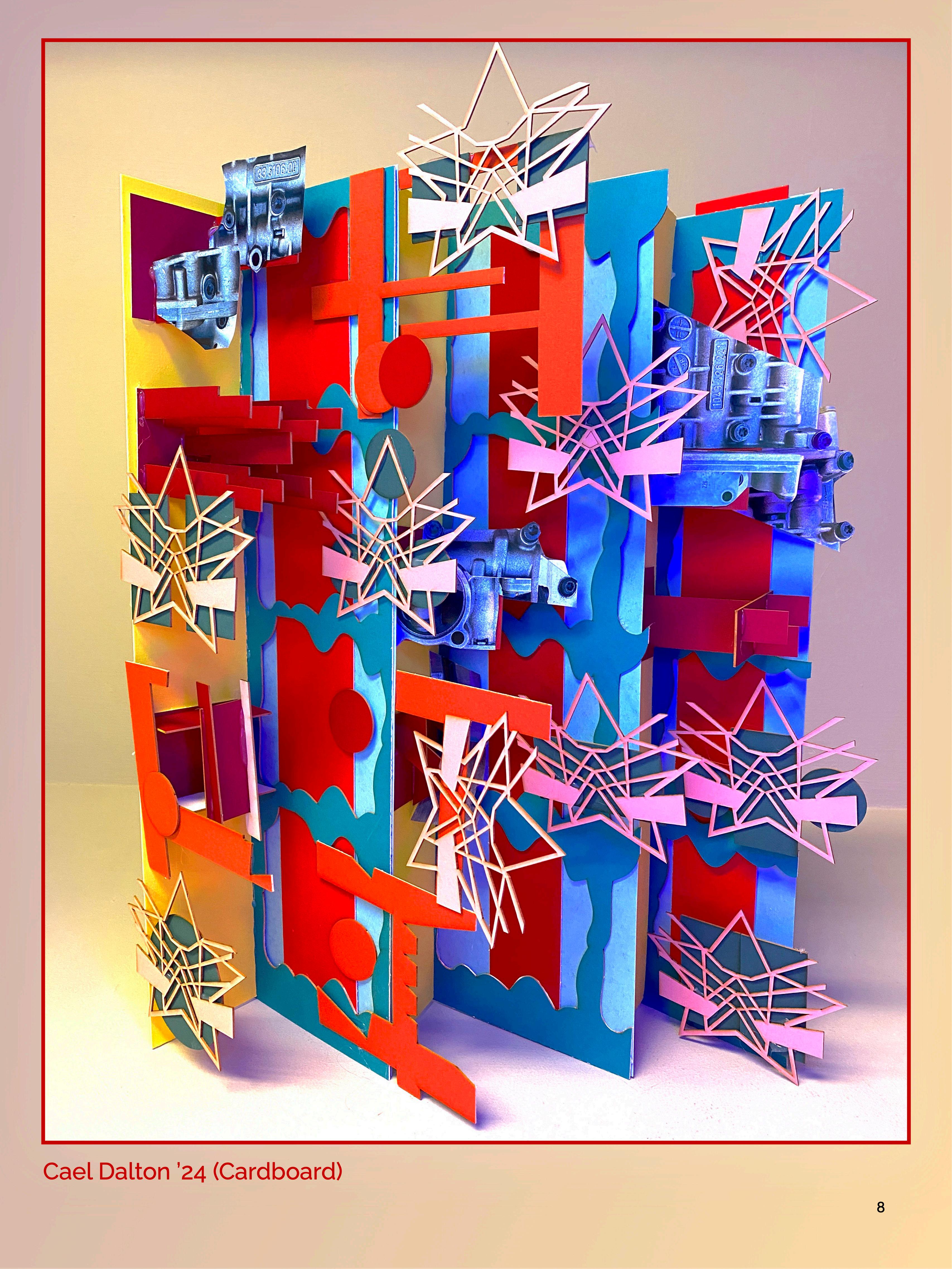
 Christian Larkin ’23 (Cardboard)
Christian Larkin ’23 (Cardboard)

Stories of cultural endurance and the fruitful changes in identity which it can bring. The greatest changes come from both destruction and growth…
FLIGHT FROM HAVANA
Claire Citarella ‘25
MOROCCO ENDURING
Cosimo Giovine ‘25

Oliver Velasco ‘25
Finn O’Sullivan ‘26

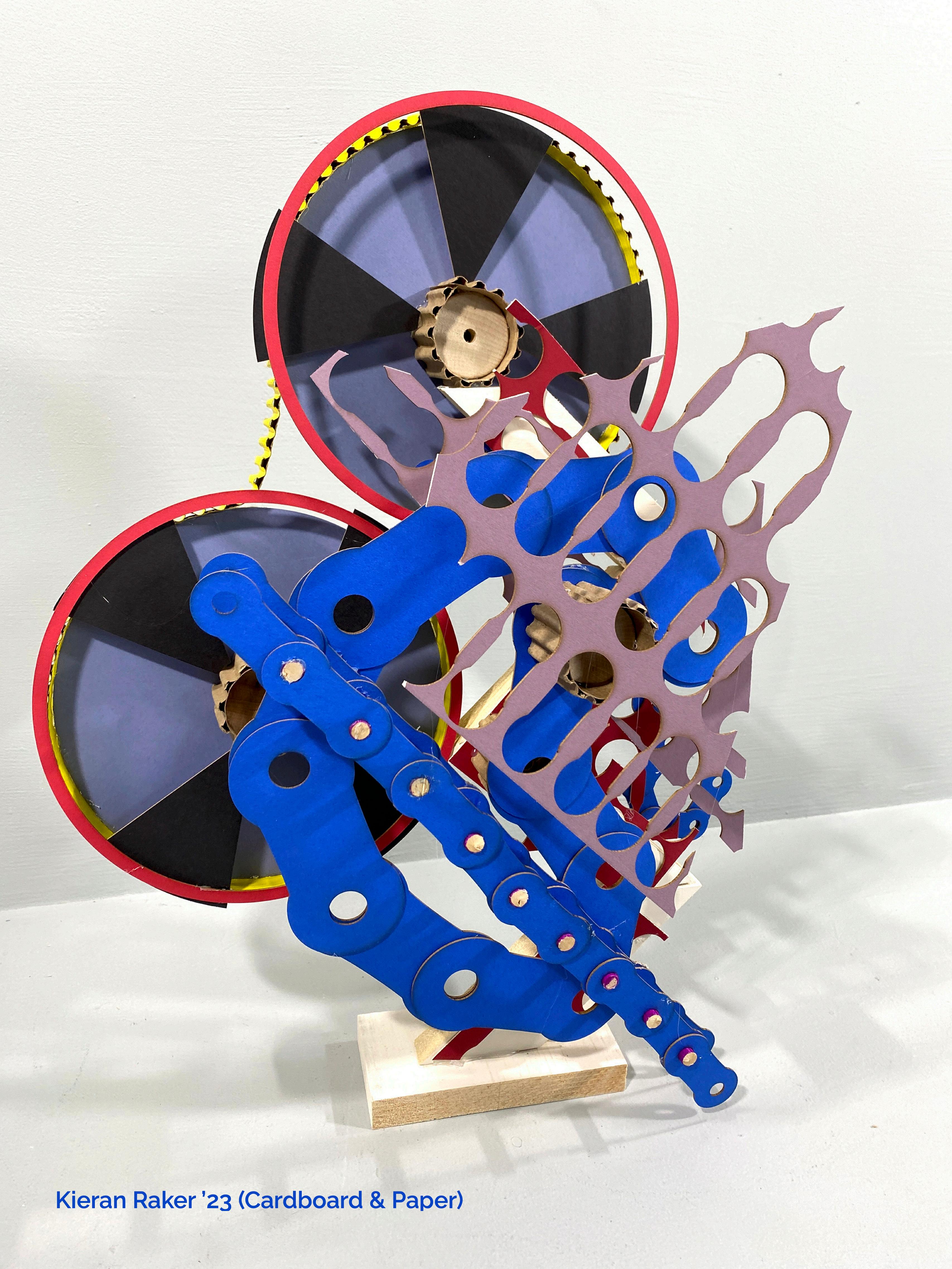
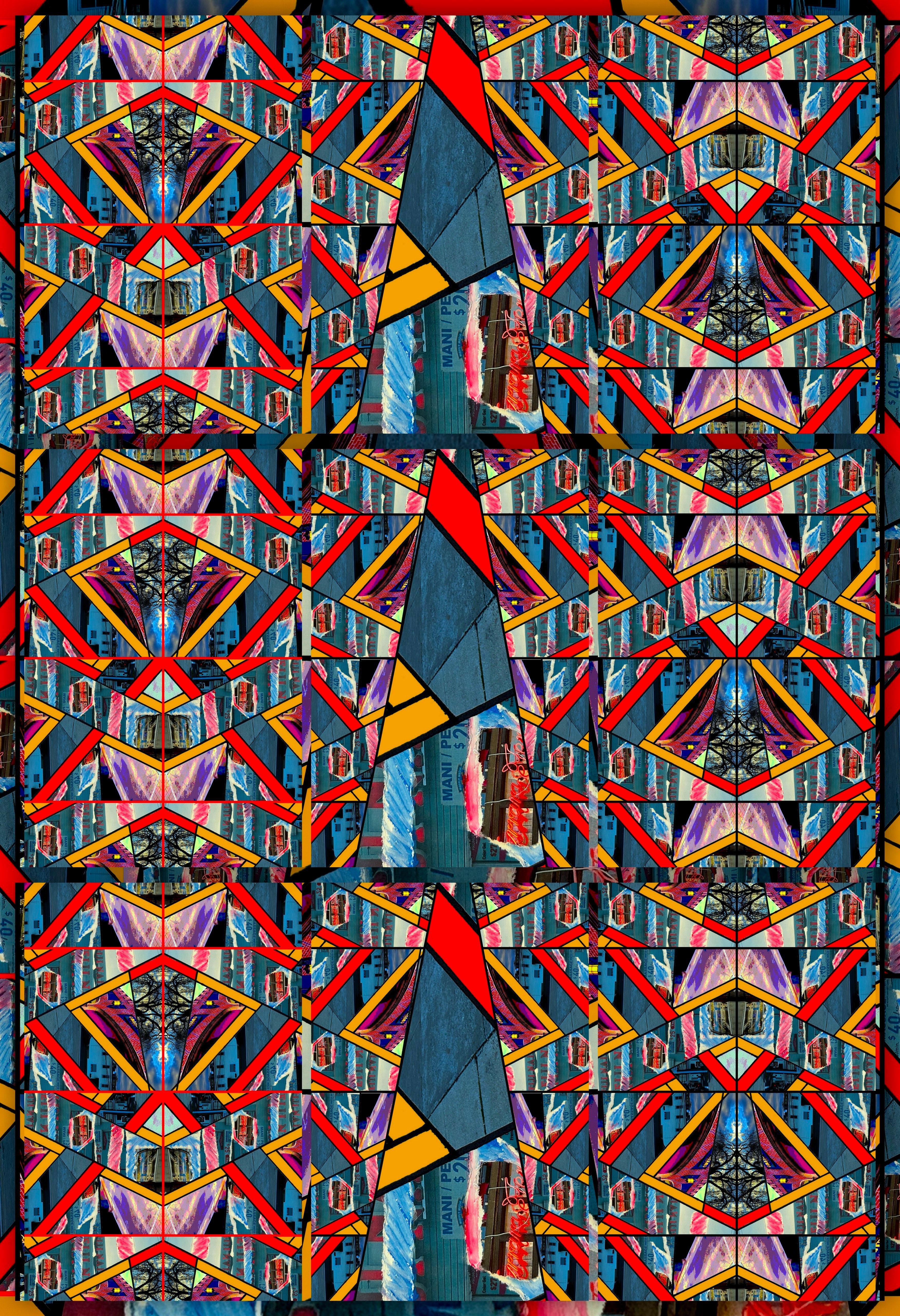
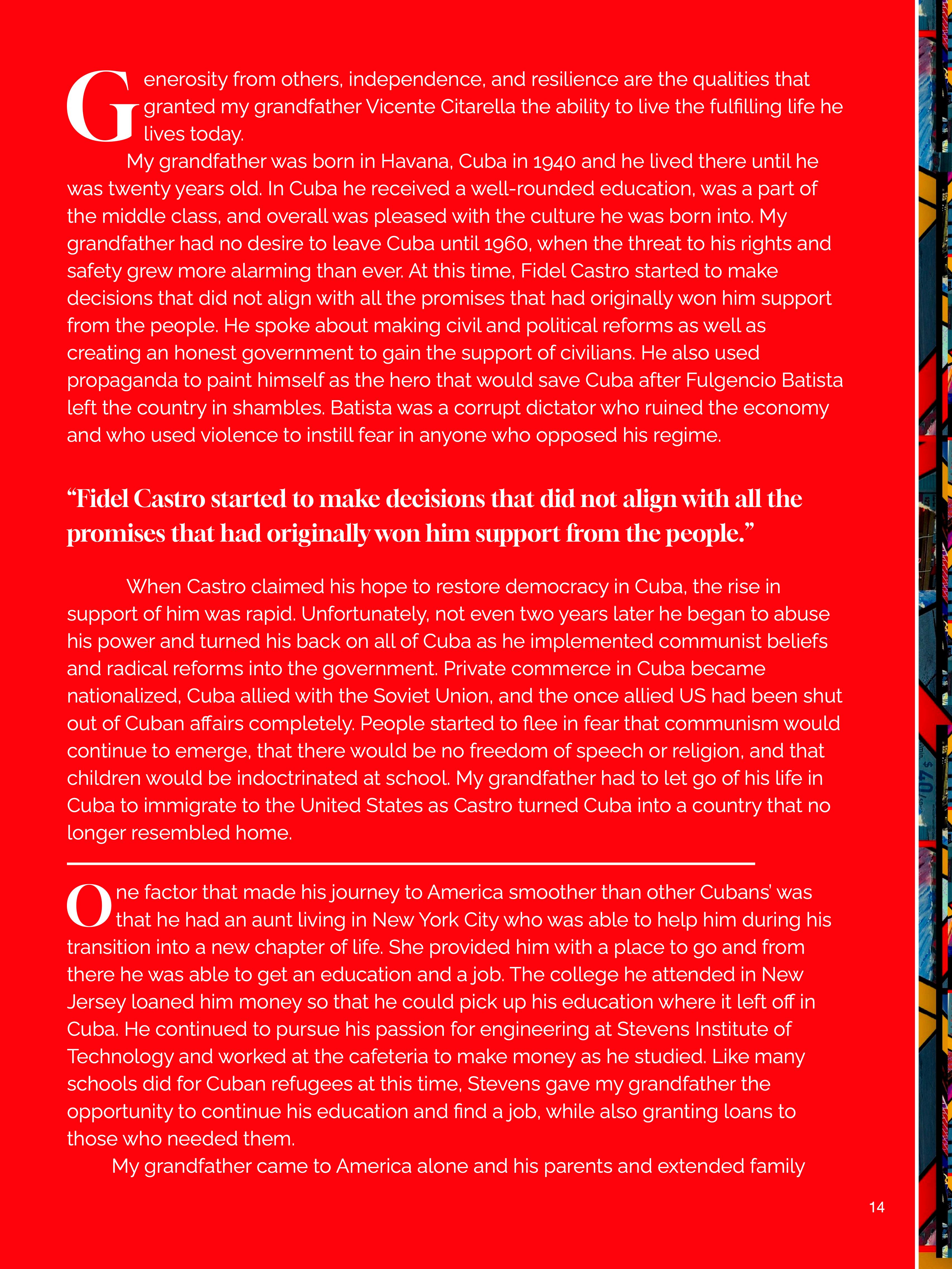
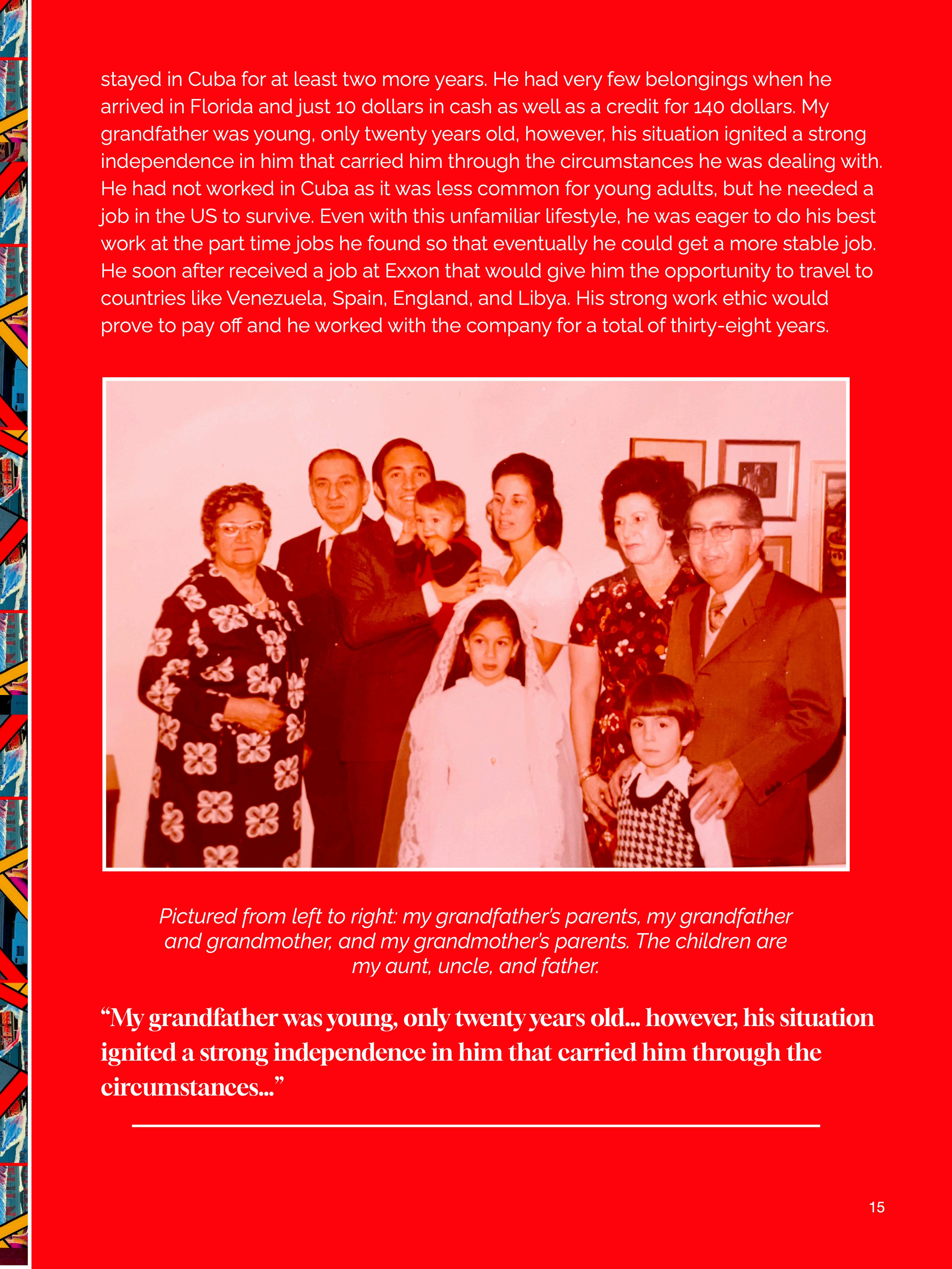
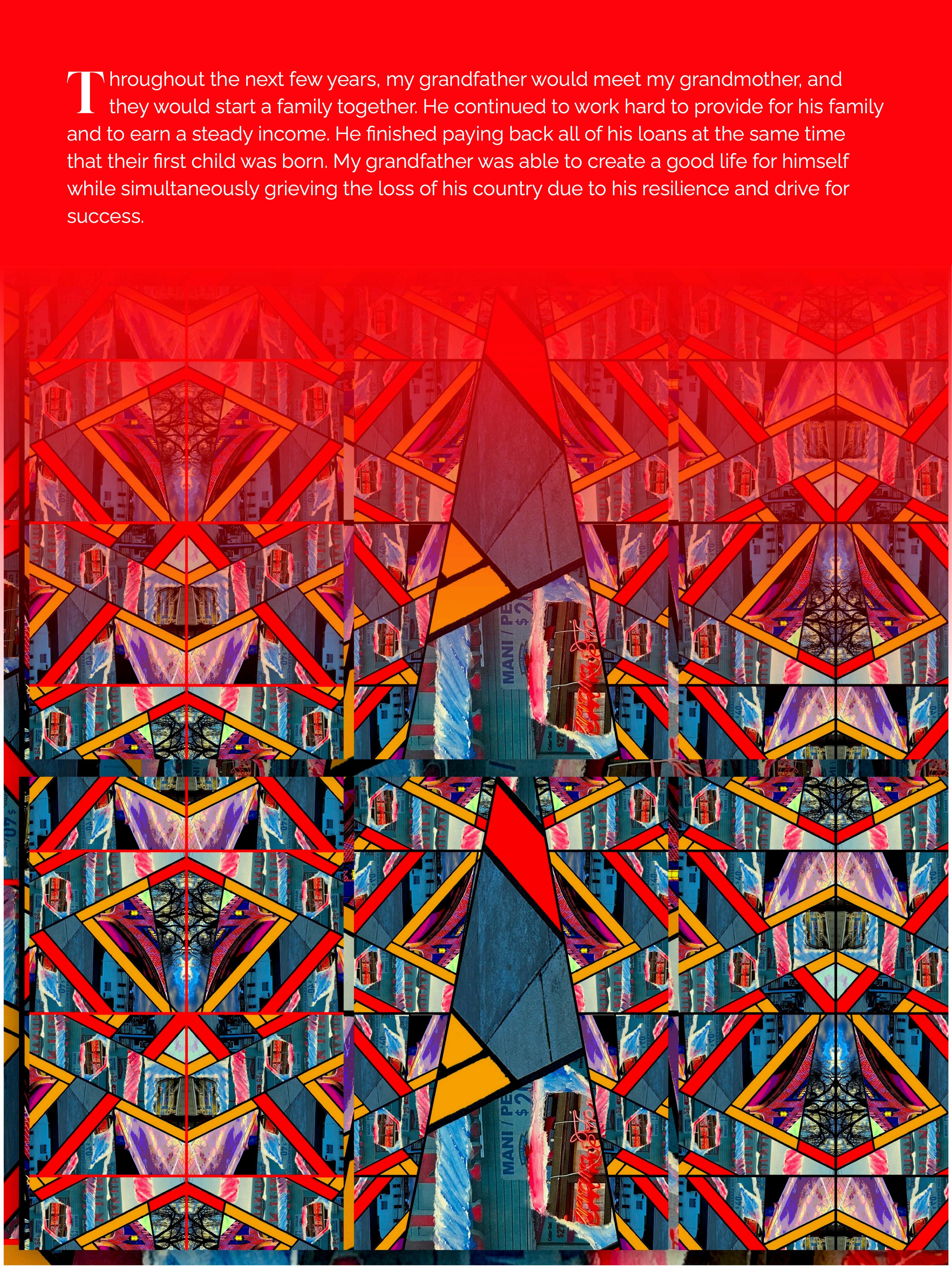
 By Cosimo Giovine ’25
By Cosimo Giovine ’25
Artwork by James Walker ’25 (Cardboard)

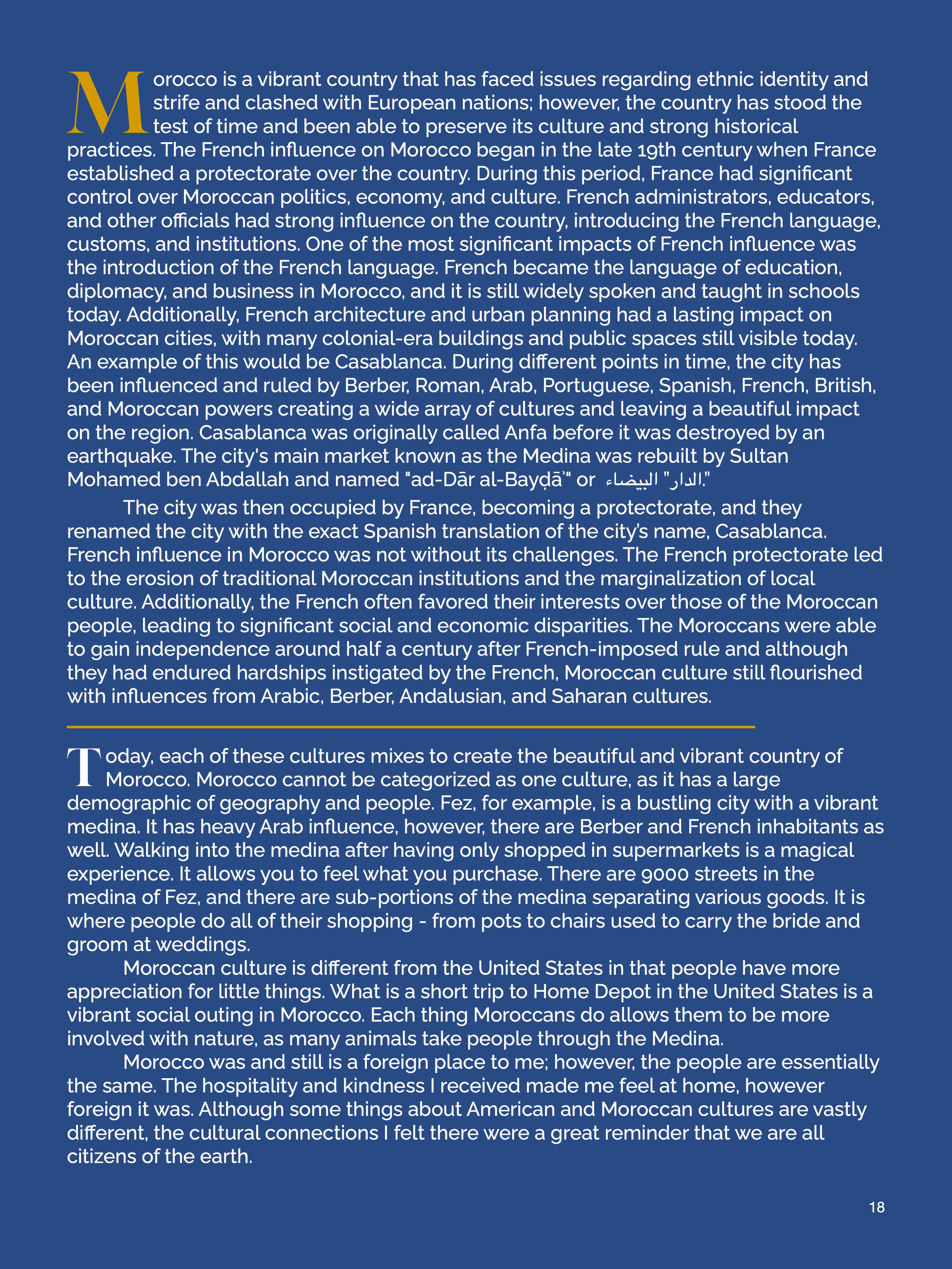



 By Finn O’Sullivan ‘26
By Finn O’Sullivan ‘26

 Artwork by CJ Hyde ’23 (Digital)
Artwork by CJ Hyde ’23 (Digital)
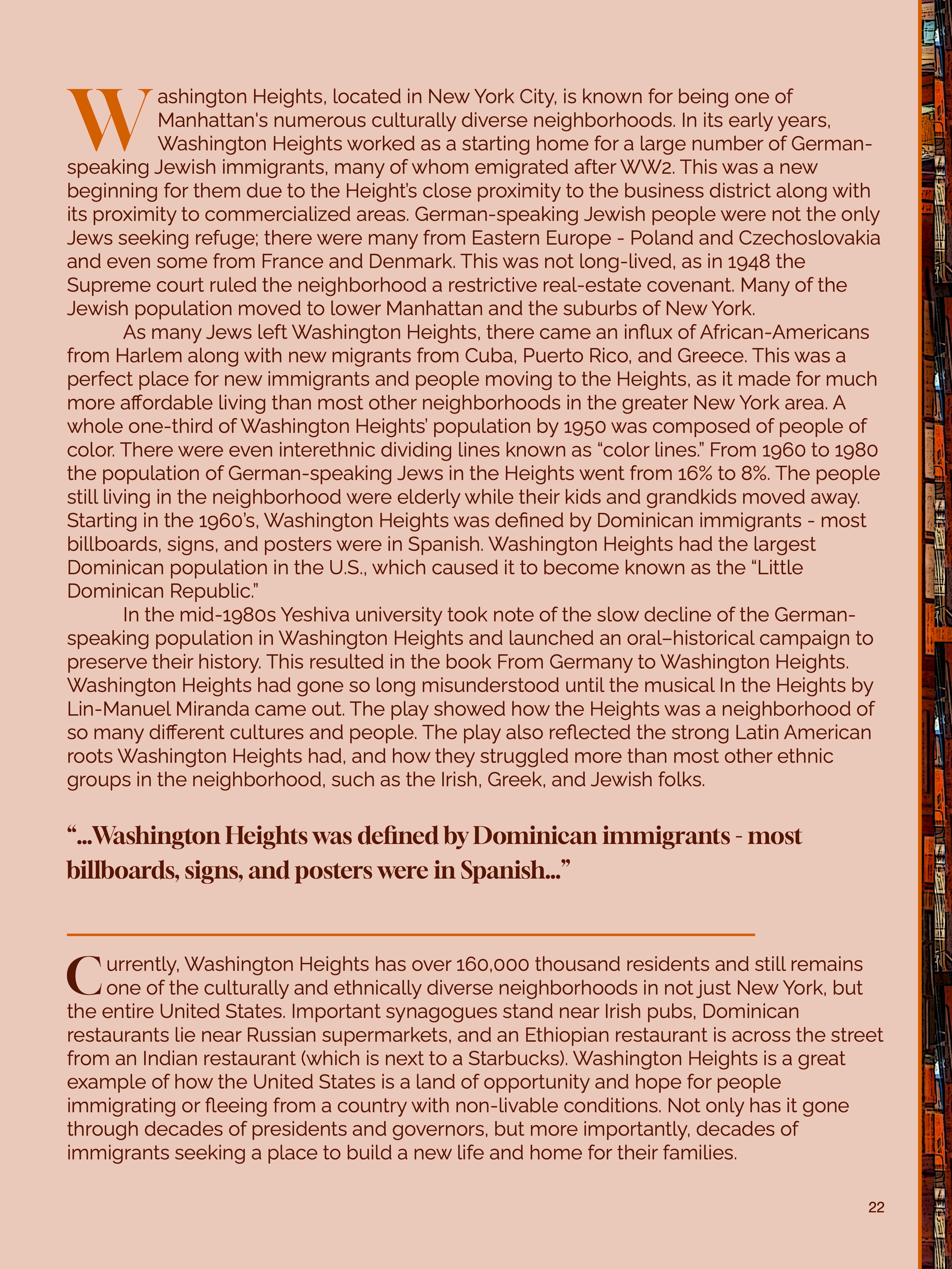
Stories of cultural tradition — because tradition can bring us together while making us each feel empowered in our identities; where we came from, and where we will go…
O PAIS DE FUTBOL
Rory Keller ‘25
Subir Garg ‘25


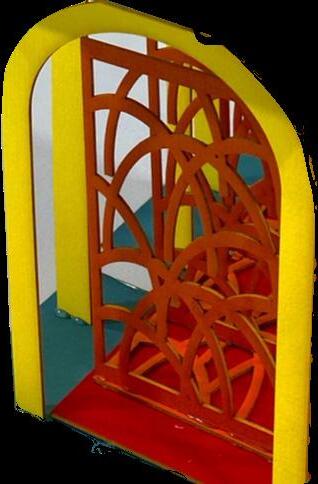

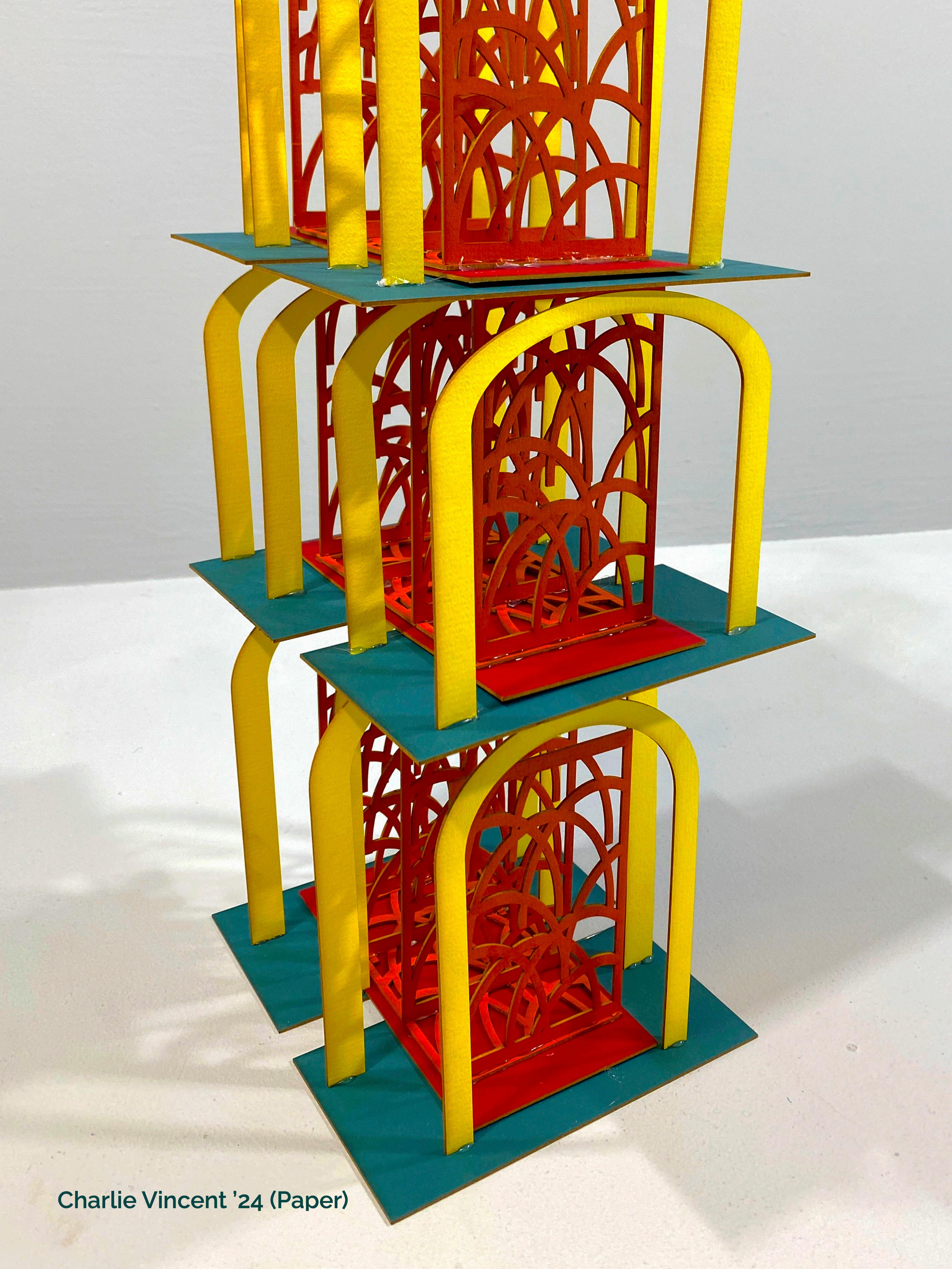
 Rory Keller ‘25
Artwork by Hannah Murray ’25 (Digital)
Rory Keller ‘25
Artwork by Hannah Murray ’25 (Digital)

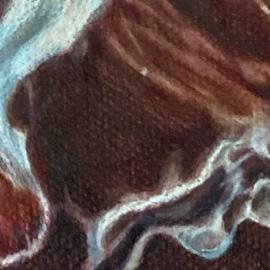


by Zara Kurbanov ’25 (Watercolor)
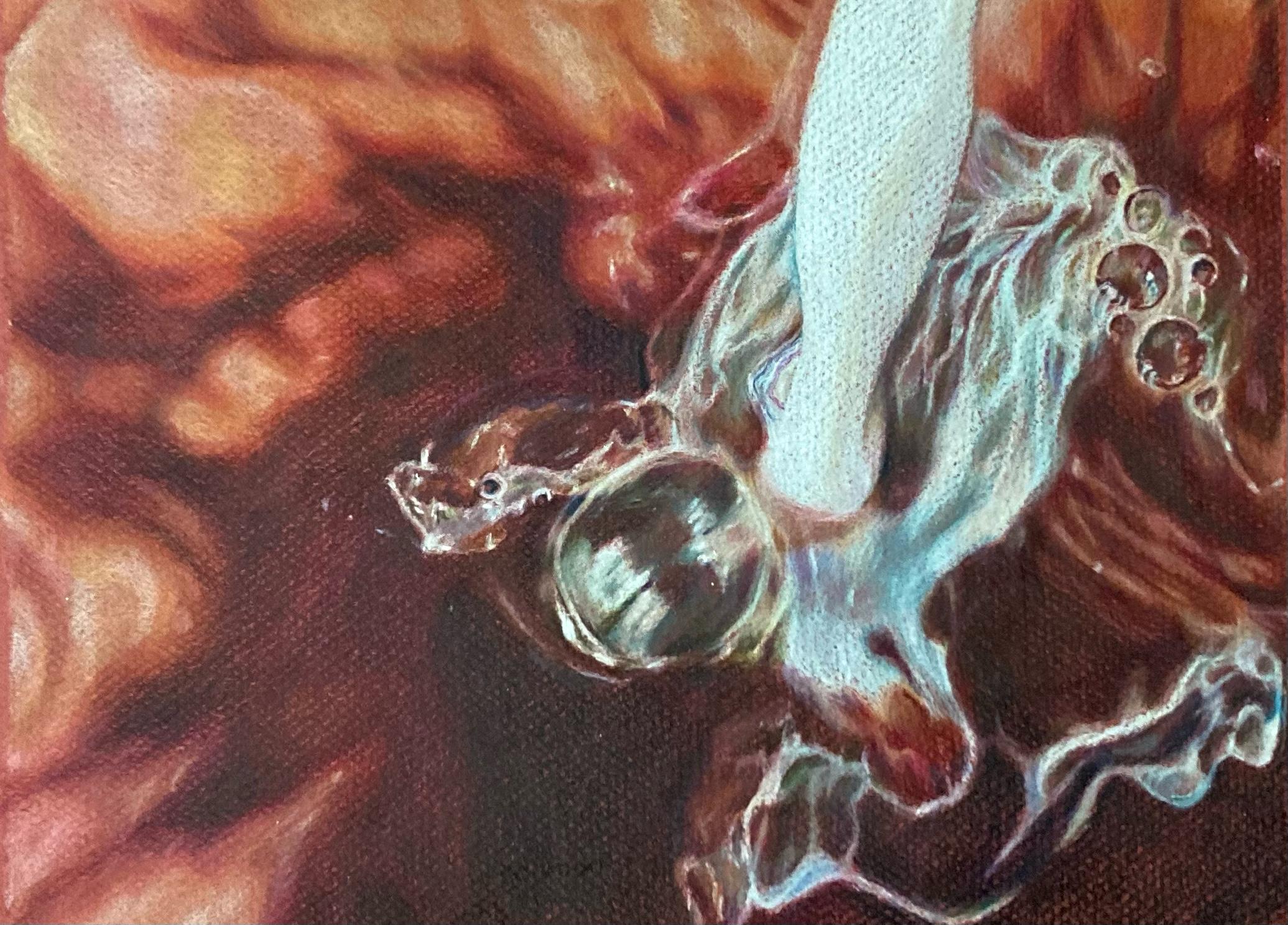
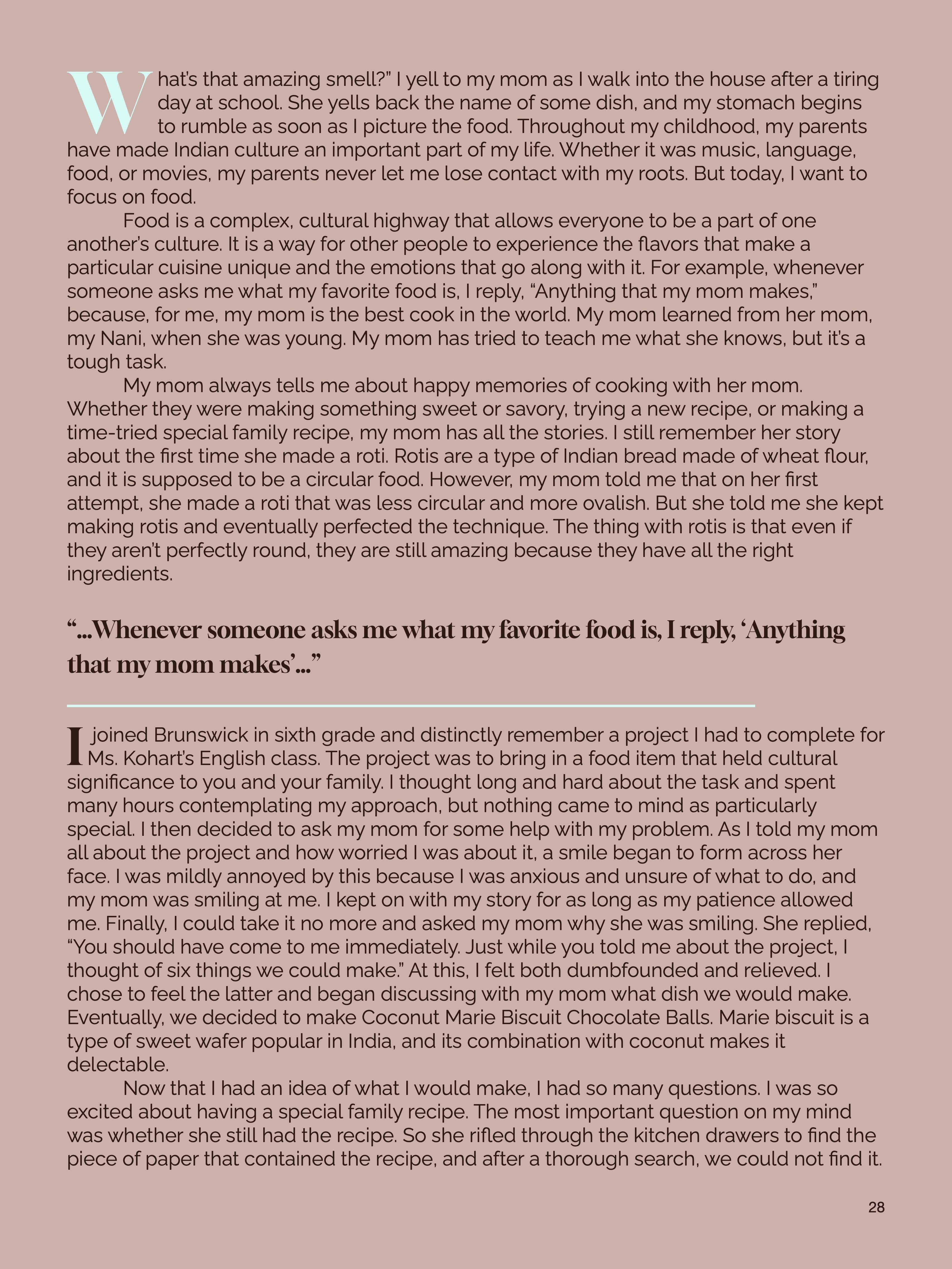

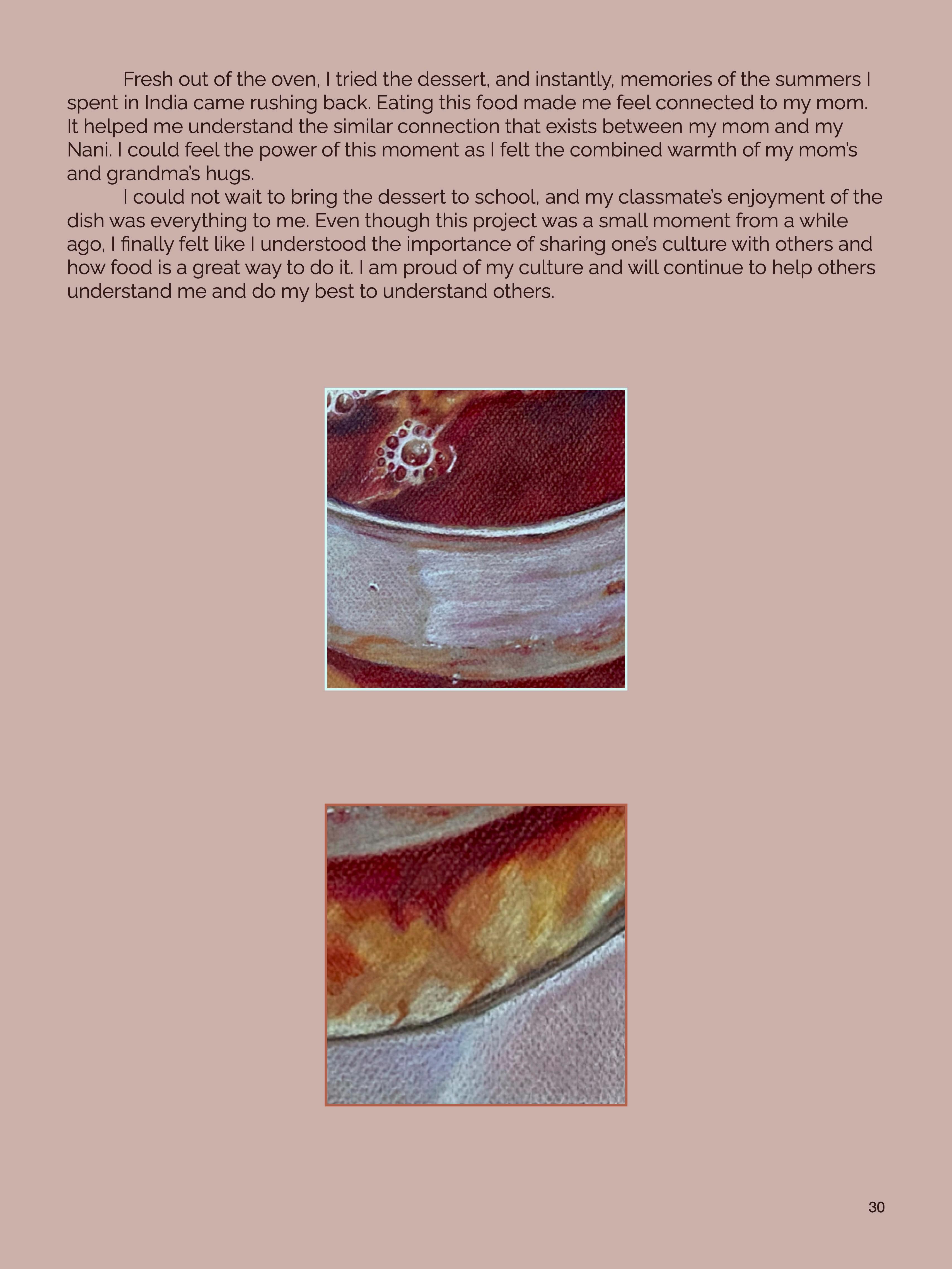
Our identities are rooted perhaps most in the worlds around us, and the way they change over the ages, bringing us new and familiar experiences…
James Lynch ‘25
THE ARABIAN REVOLUTION
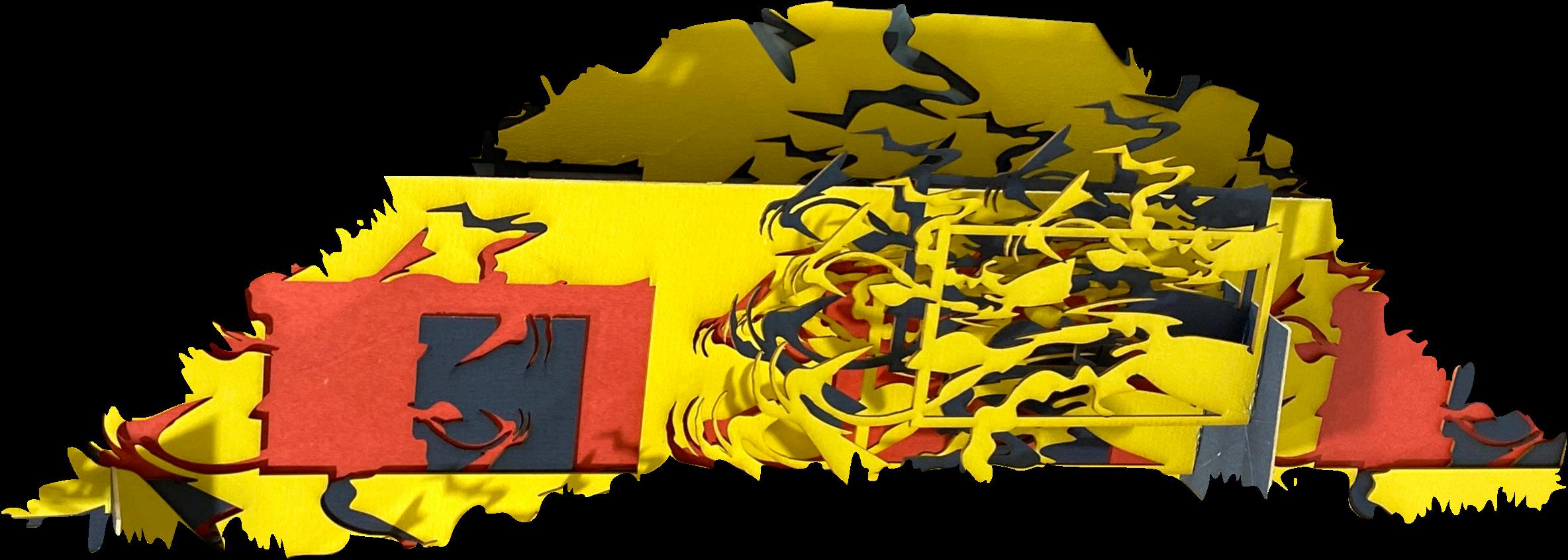
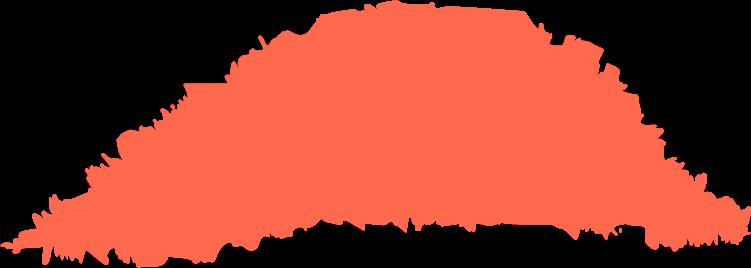
Leo Gazal ‘25
THE DEBATE CONNECTION
James Lynch ‘25

Artwork by CJ Hyde ’23 (Digital)
 By James Lynch ‘25
By James Lynch ‘25
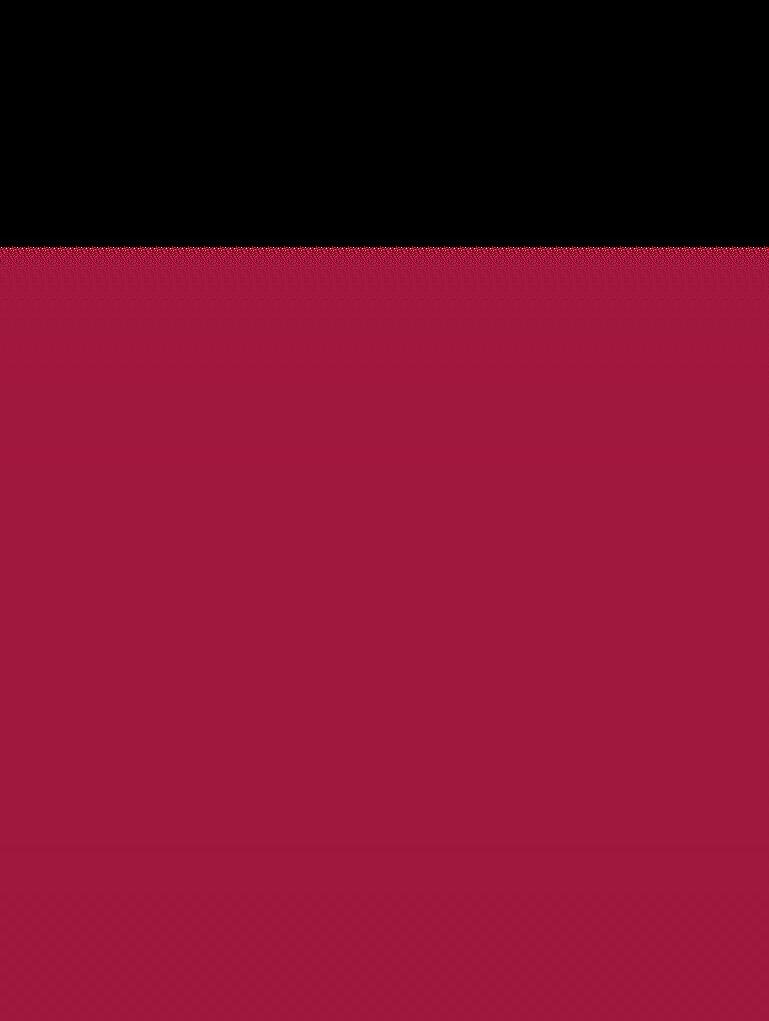


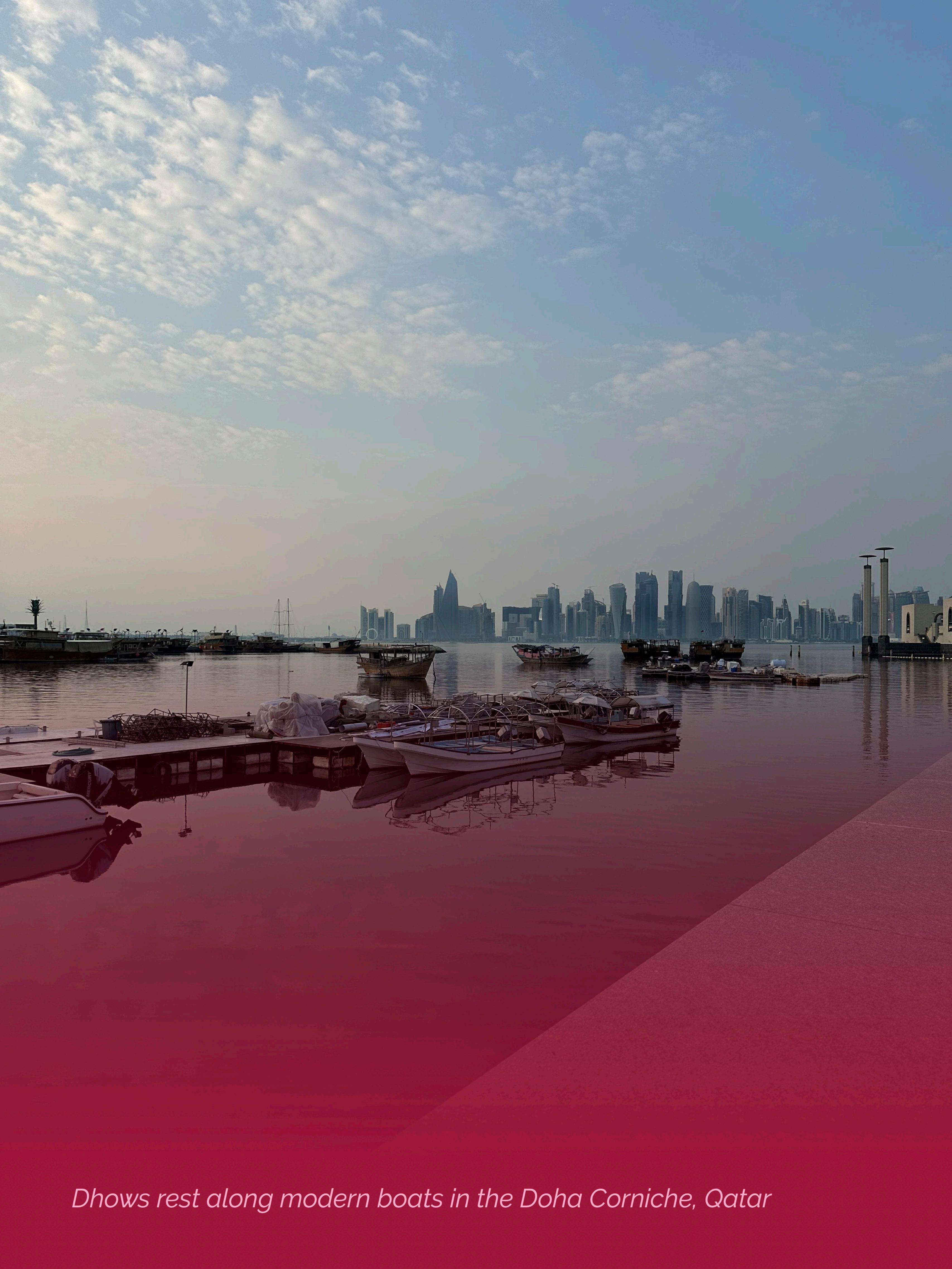
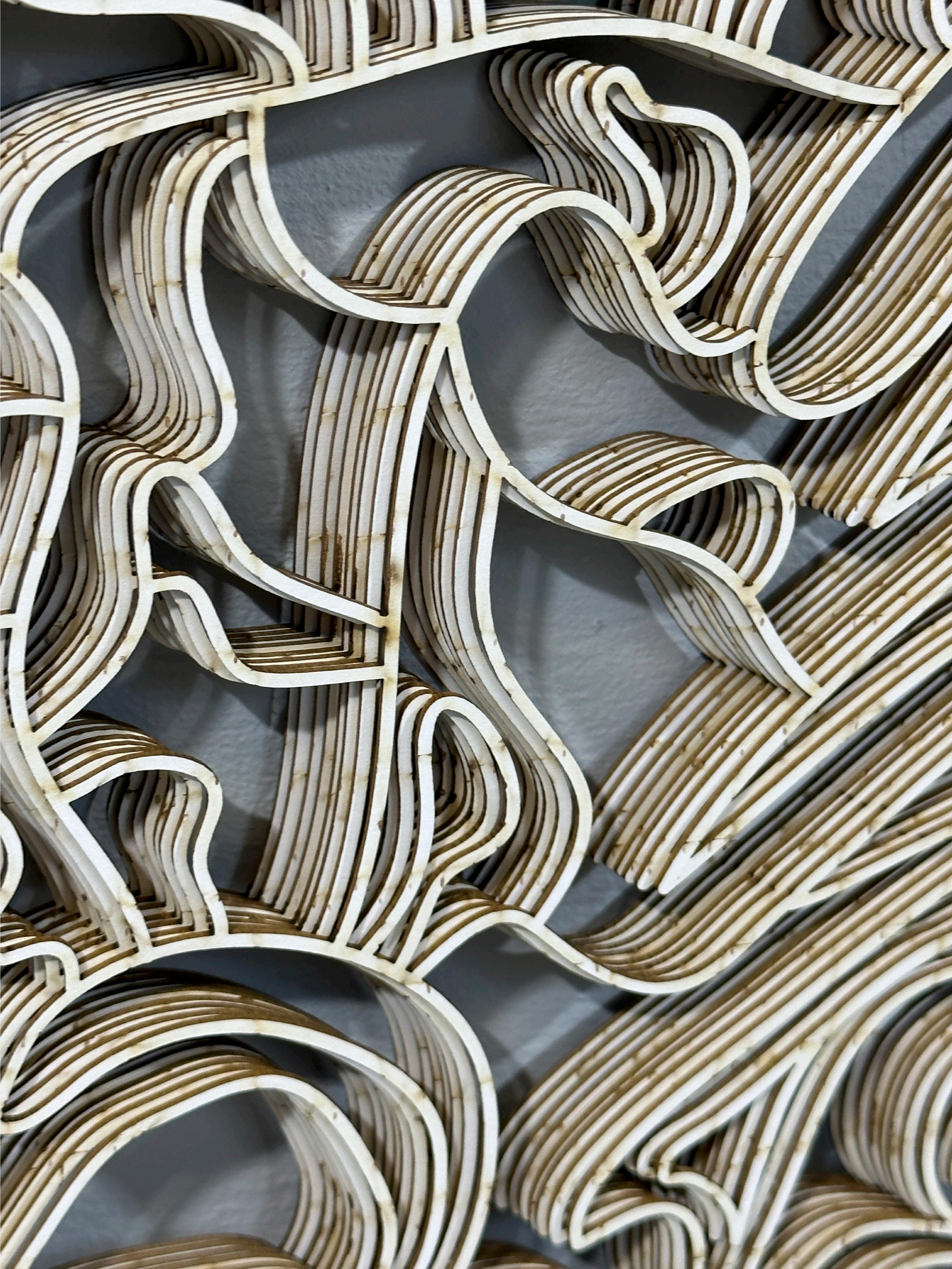
At the turn of the 21st century, countries like the United Arab Emirates and Saudi Arabia began a period of westernization, and their cities began to welcome the world. In 1932, Bahrain was the first country to discover significant amounts of oil deposits and soon started its production in 1934. While it was the first country to find the oil, it had a relatively small amount compared to the United Arab Emirates (UAE) and Saudi Arabia. Saudi Arabia discovered its oil in March 1938 at the Dammam oil well. Finally, the UAE found its oil in the 1950s and began exporting its oil through the port of Abu Dhabi in 1962. In the coming years, the United Arab Emirates and Saudi Arabia started developing their infrastructure, diversifying their economies, and investing capital in innovation and education.
Saudi Arabia was among the first to begin its rapid infrastructure development as it invested heavily in infrastructure to support the exportation and importation to sustain oil production. However, these massive plans for a new infrastructure played out in the long term for the nation. They began establishing seaports, airports, and energy infrastructure which would later allow for their massive evolution during the 21st century. These plans include King Abdullah's Economic City, NEOM, and other attractive projects. These projects were part of Vision 2030 which aimed to shift Saudi Arabia in a direction away from oil and towards net zero carbon emission by 2030. The launch of Vision 2030 called for innovation and entrepreneurship in the country, aimed to limit the nation's dependence on oil and instead establish innovation centers and fund prominent startups throughout the nation. Saudi Arabia also began the promotion of female entrepreneurship, a big leap for the Arab world in terms of including and accepting women's rights. There is no doubt that throughout the past decade, Saudi Arabia has placed a strong emphasis on developing high-end infrastructure, promoting innovation, and all together diversifying its economy.
The United Arab Emirates initially developed its country similarly to Saudi Arabia. However, it focused on building infrastructure, innovation, and diversification to appeal to tourists rather than the people of their nation. The UAE began the rapid development of its infrastructure by building state-of-the-art airports, luxury resorts, and theme parks to attract tourists to its borders. The airport was built in 1960 but has seen extraordinary evolution since then, fueled by technological and innovative advancements allowed by the country's large oil reserves. Once the construction of the Dubai International Airport was completed, they began opening museums and theme parks at the turn of the century, including the famous Ferrari World theme park in Abu Dhabi. More recently, the Louvre Abu Dhabi museum opened in 2017. Finally, the UAE has made massive technological strides that the western media fails to highlight; these innovations include the nation's Space exploration and studies in Artificial Intelligence. In 2009 the UAE created its first satellite and established the UAE Space Agency in 2014 in hopes of progressing space and interplanetary travel.
Saudi Arabia, The United Arab Emirates, and other Middle-Eastern countries have transitioned to vibrant centers of innovation and infrastructure, symbolizing the opening of a new wonder of the world.
Artwork by Ollie Leonard ’25 (Cardboard)



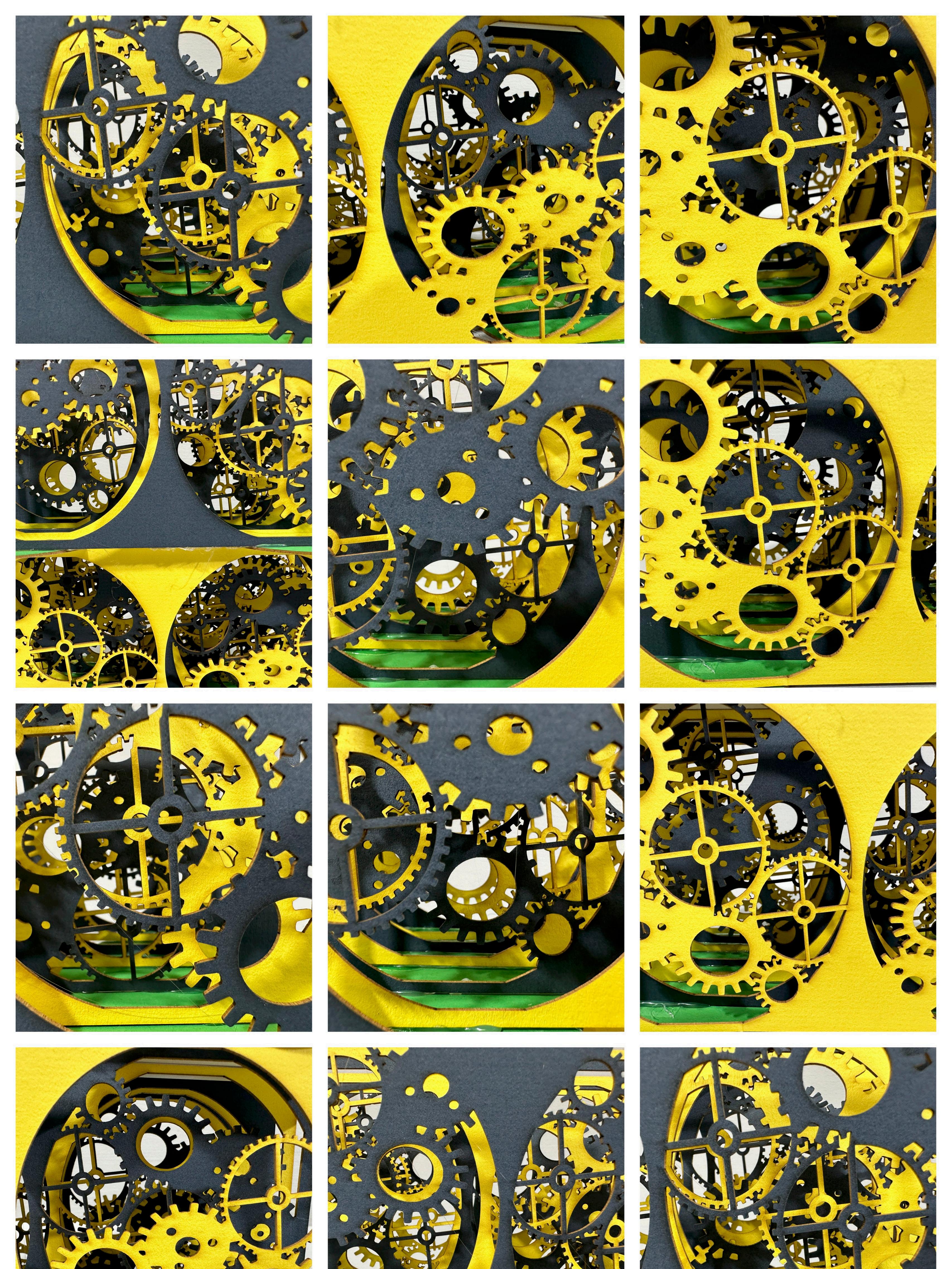
A new initiative for 2023, AP program students contributed high-level analytical essays which were adapted for magazine form. These essays explore and analyze artists and how their work expresses identity…
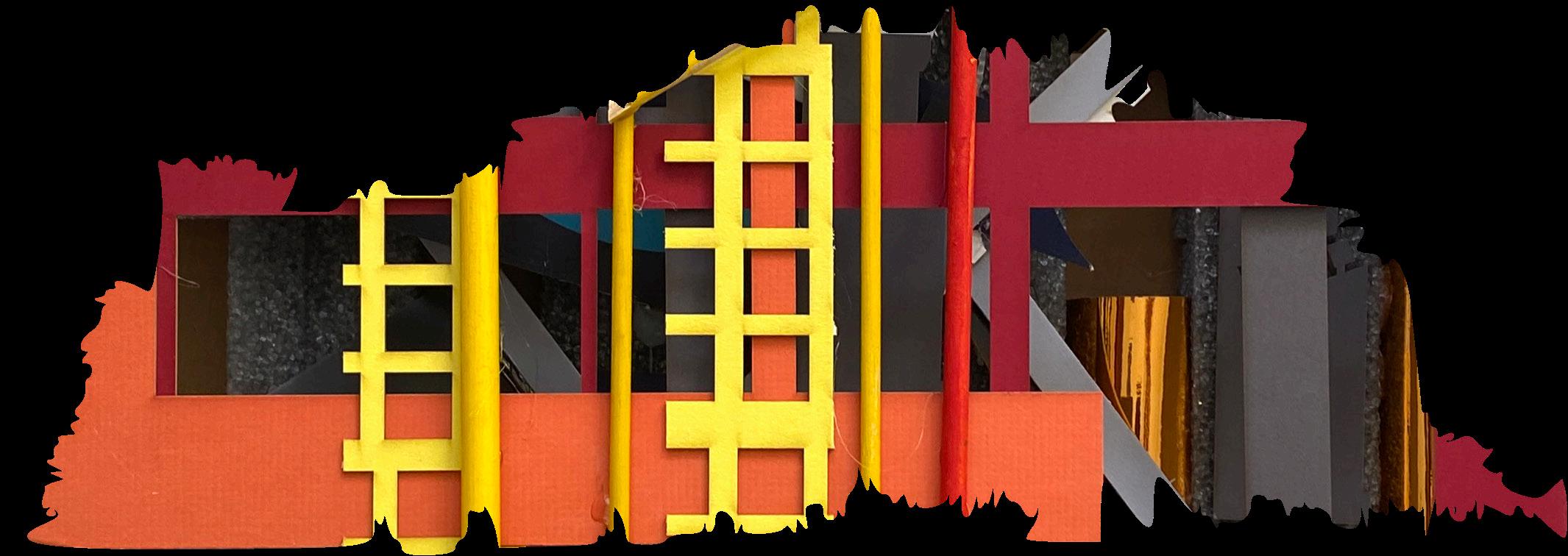

SEWING TOGETHER THE BLACK EXPERIENCE
Ava Lee ‘23
MAMAN
Alexandra Sanden ‘23
BRICK HOUSE
Charlie Gaynor ‘24
DEEP BLUE SKY
Sarah Li ‘23
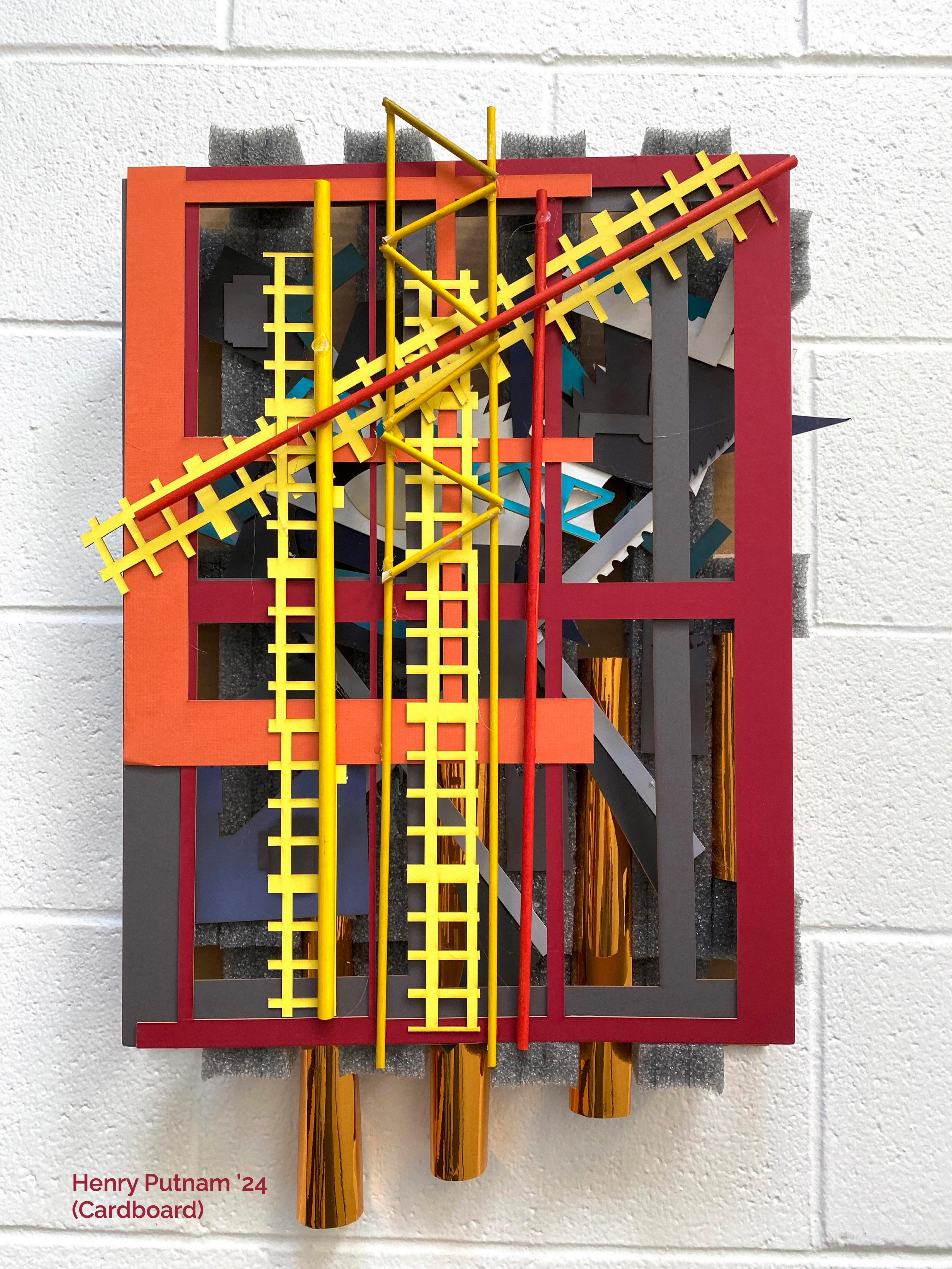
 By Sarah Li ‘23
By Sarah Li ‘23
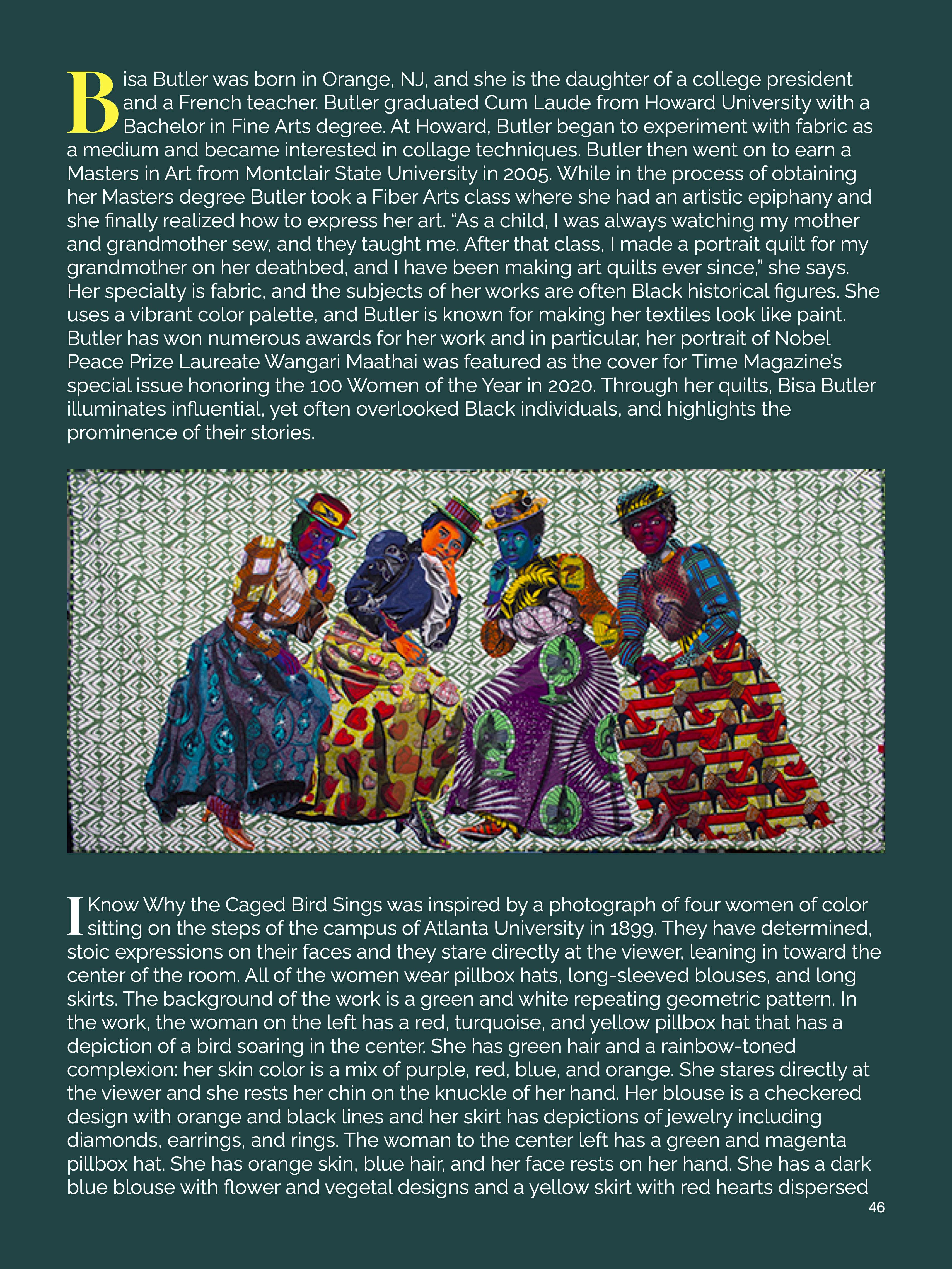
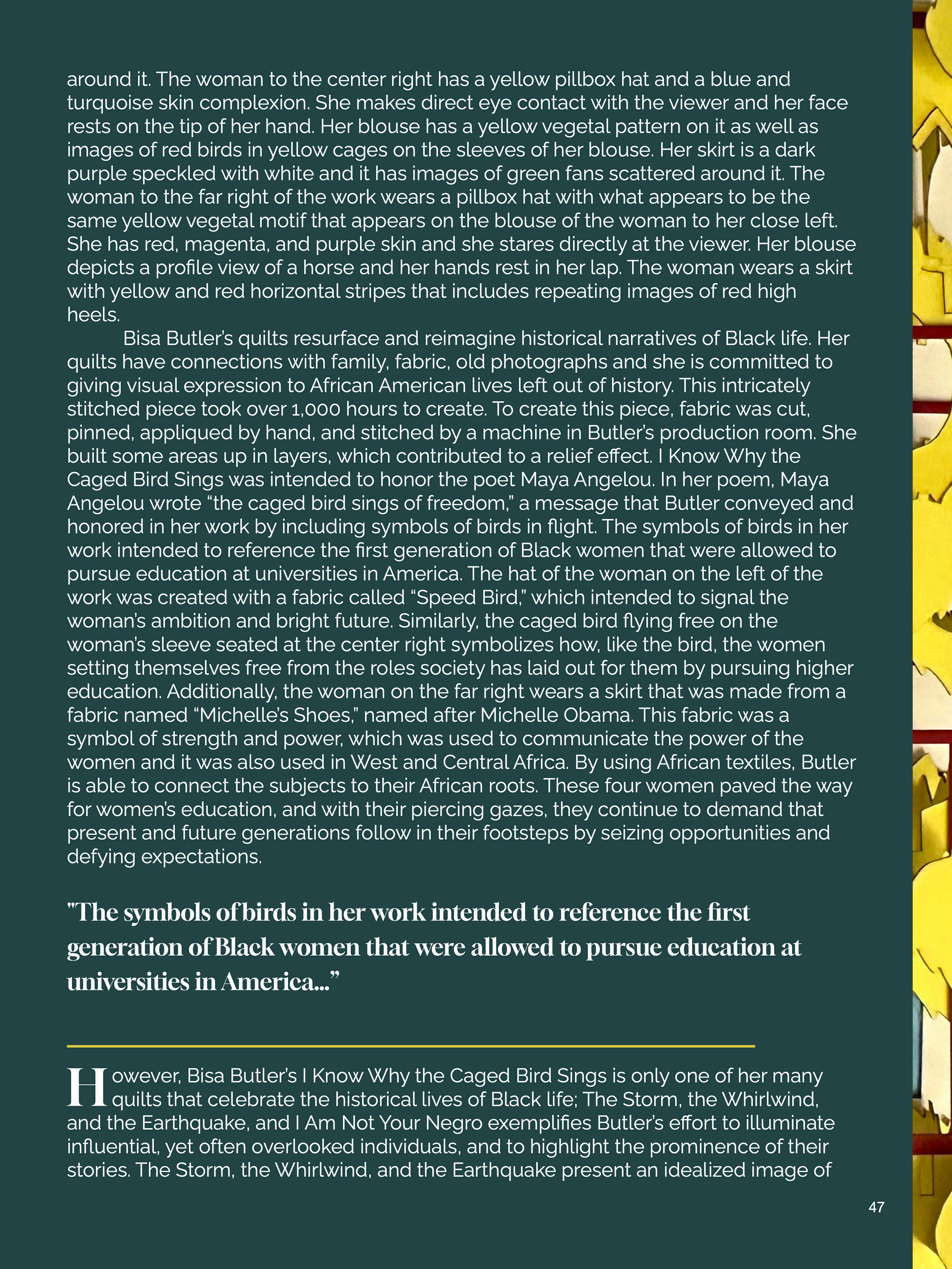
 By Alexandra Sanden ‘23
By Alexandra Sanden ‘23


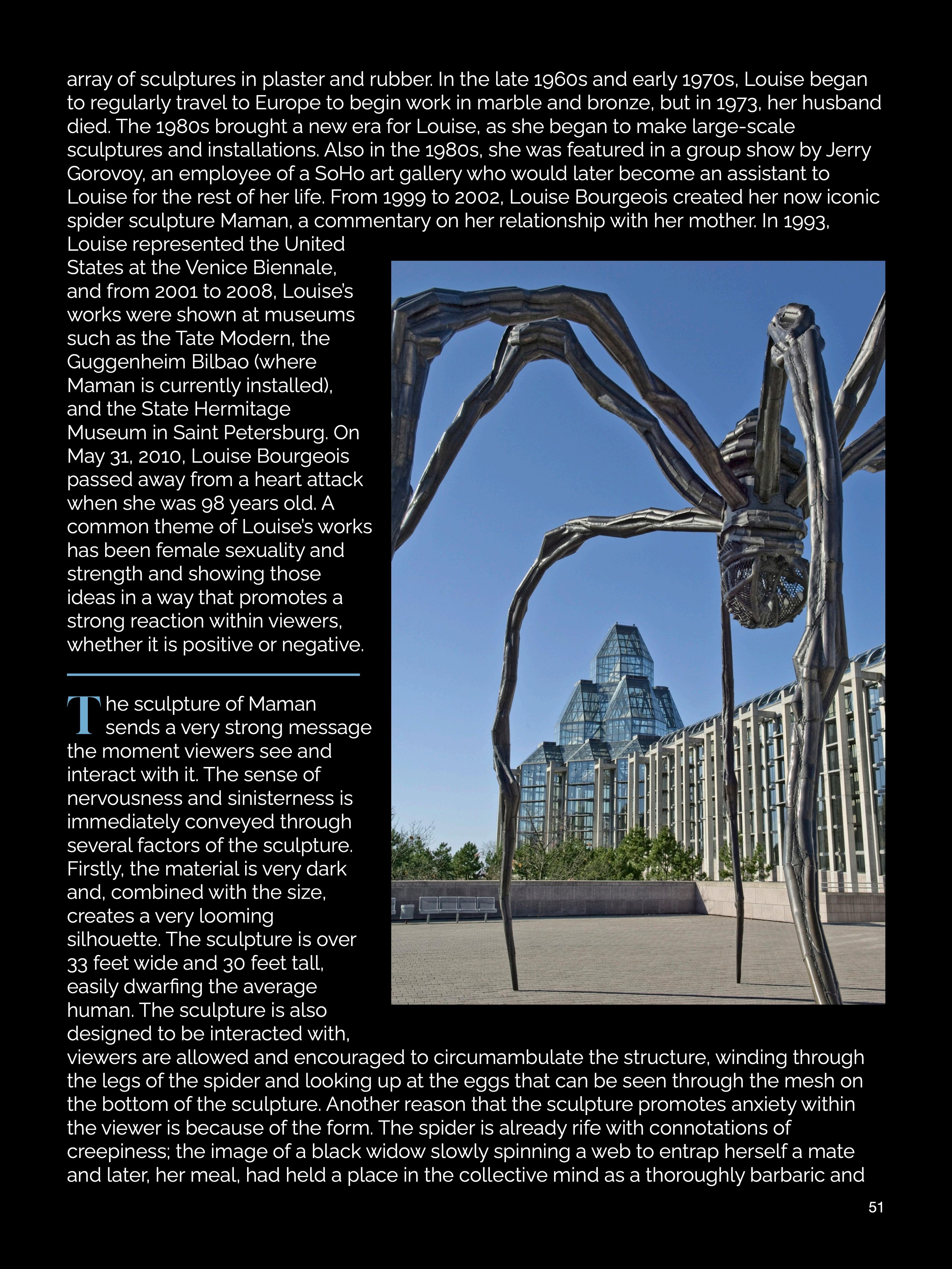

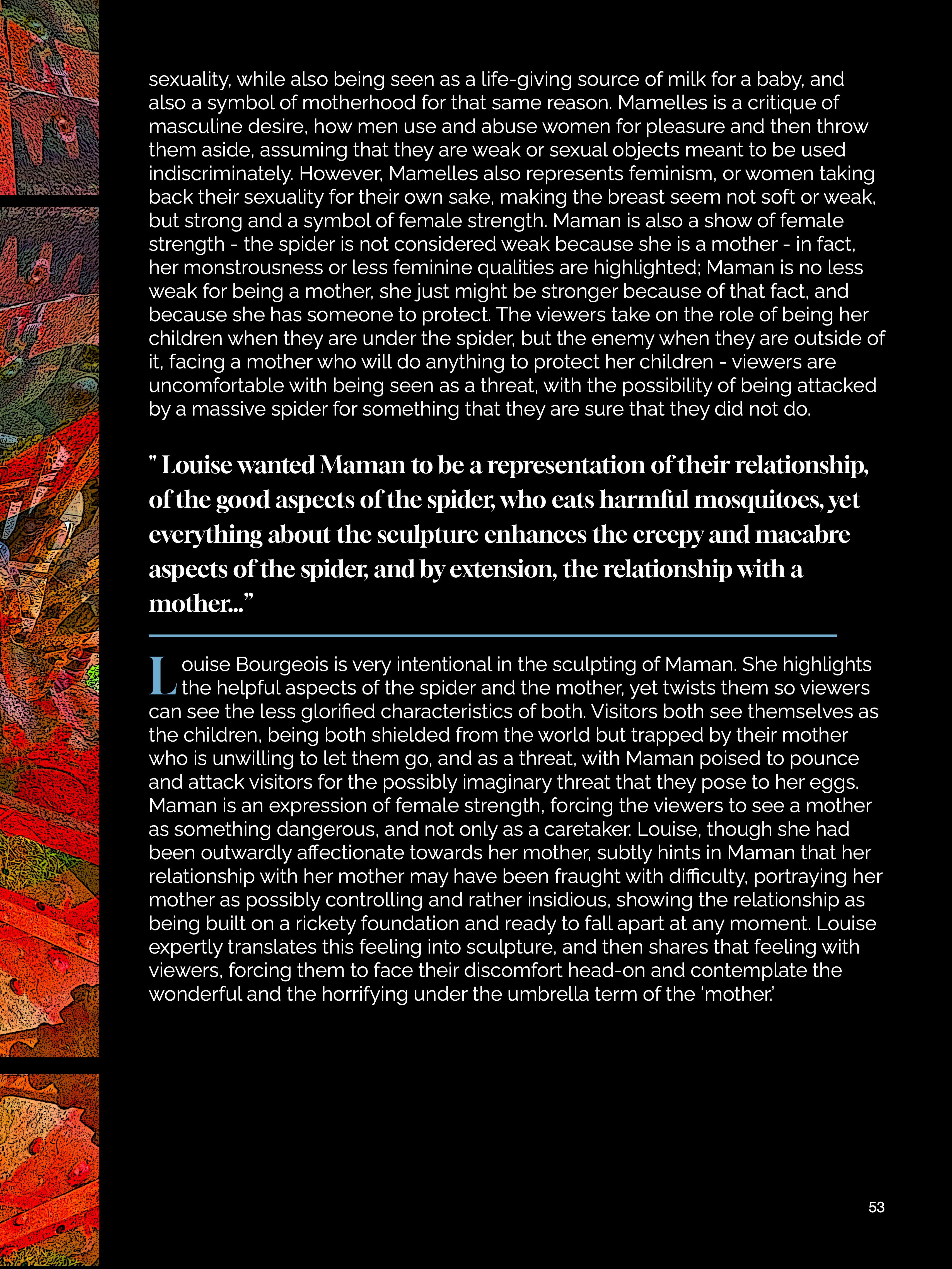
 By Charlie Gaynor ‘24
By Charlie Gaynor ‘24
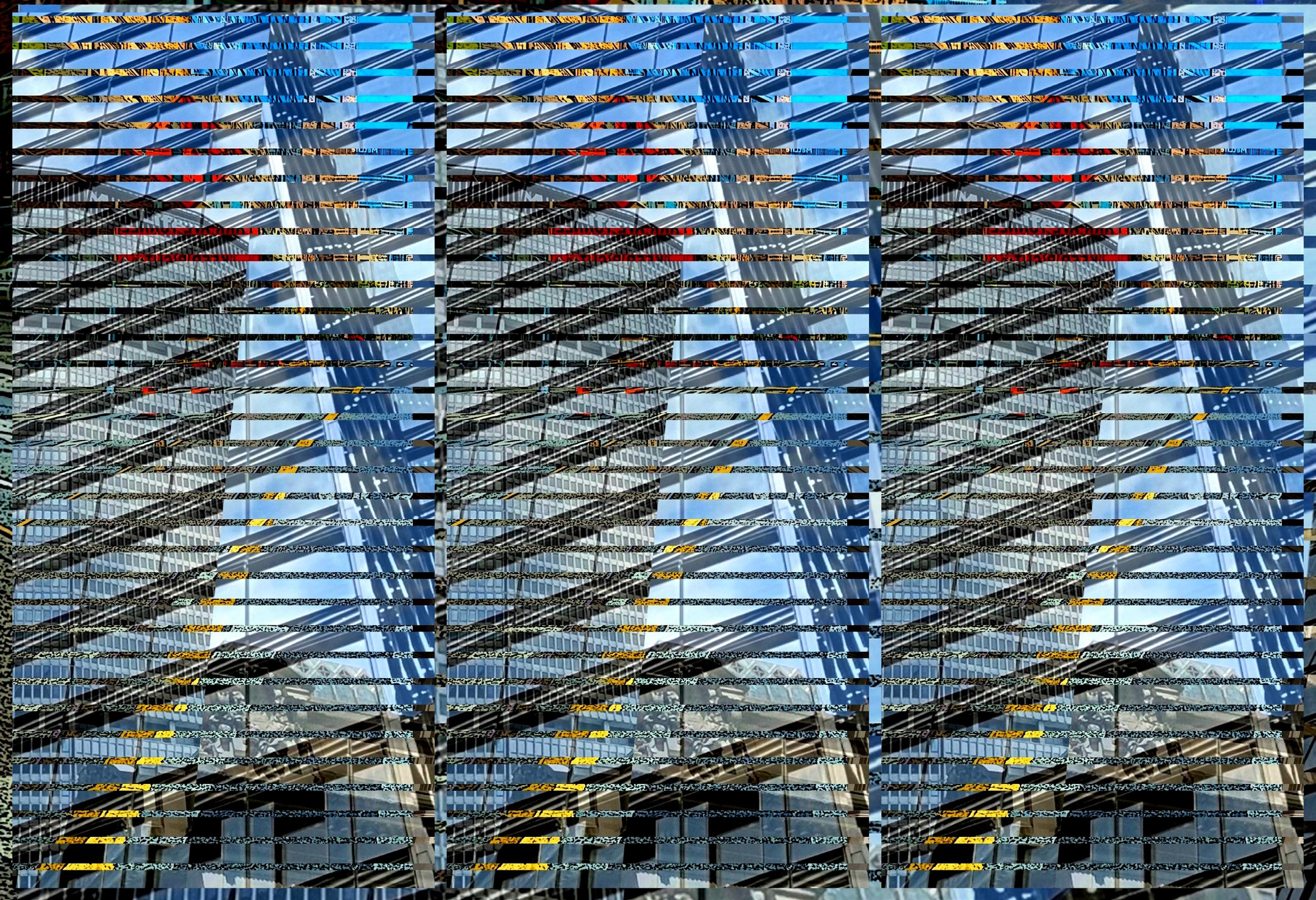

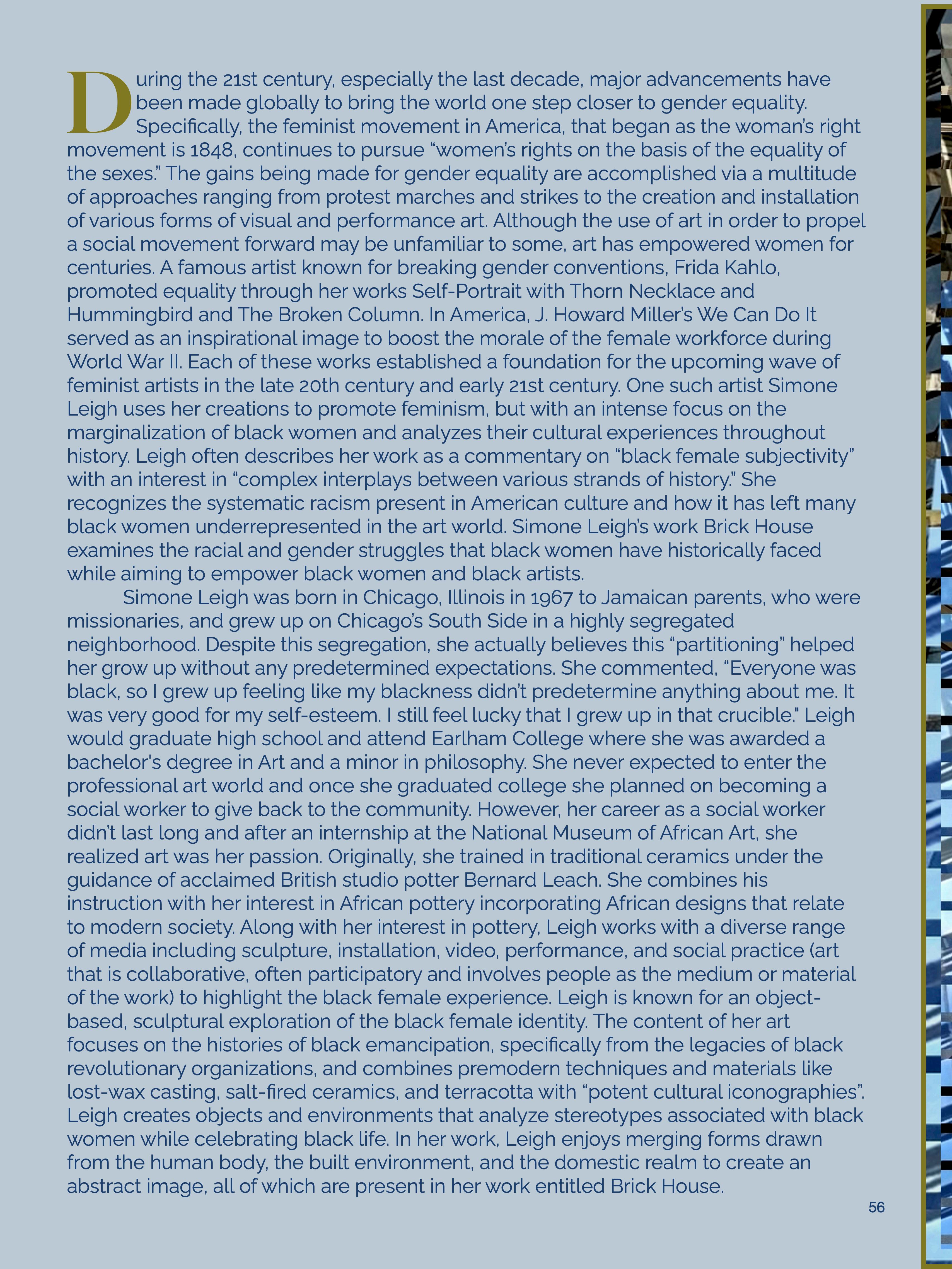

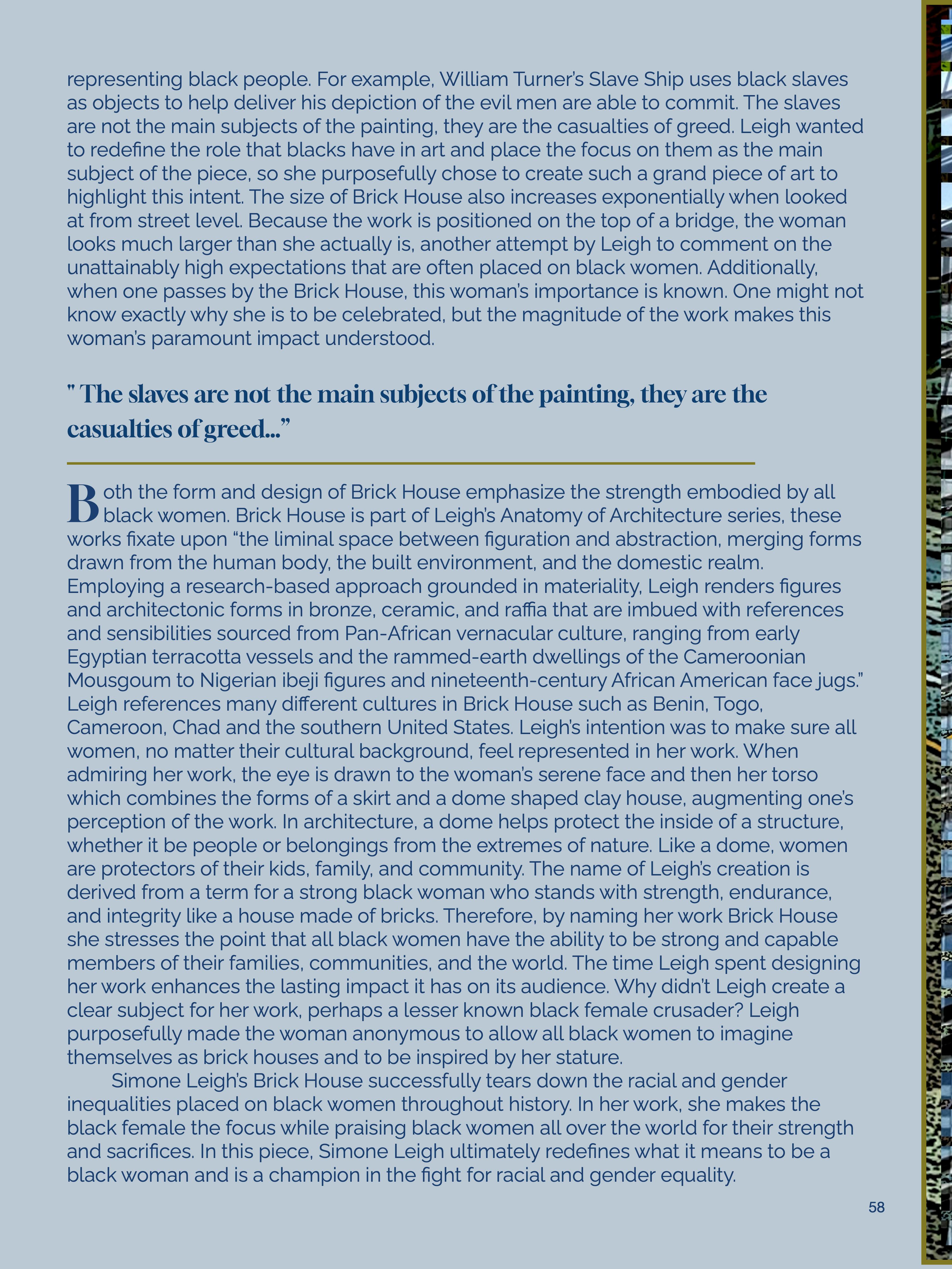

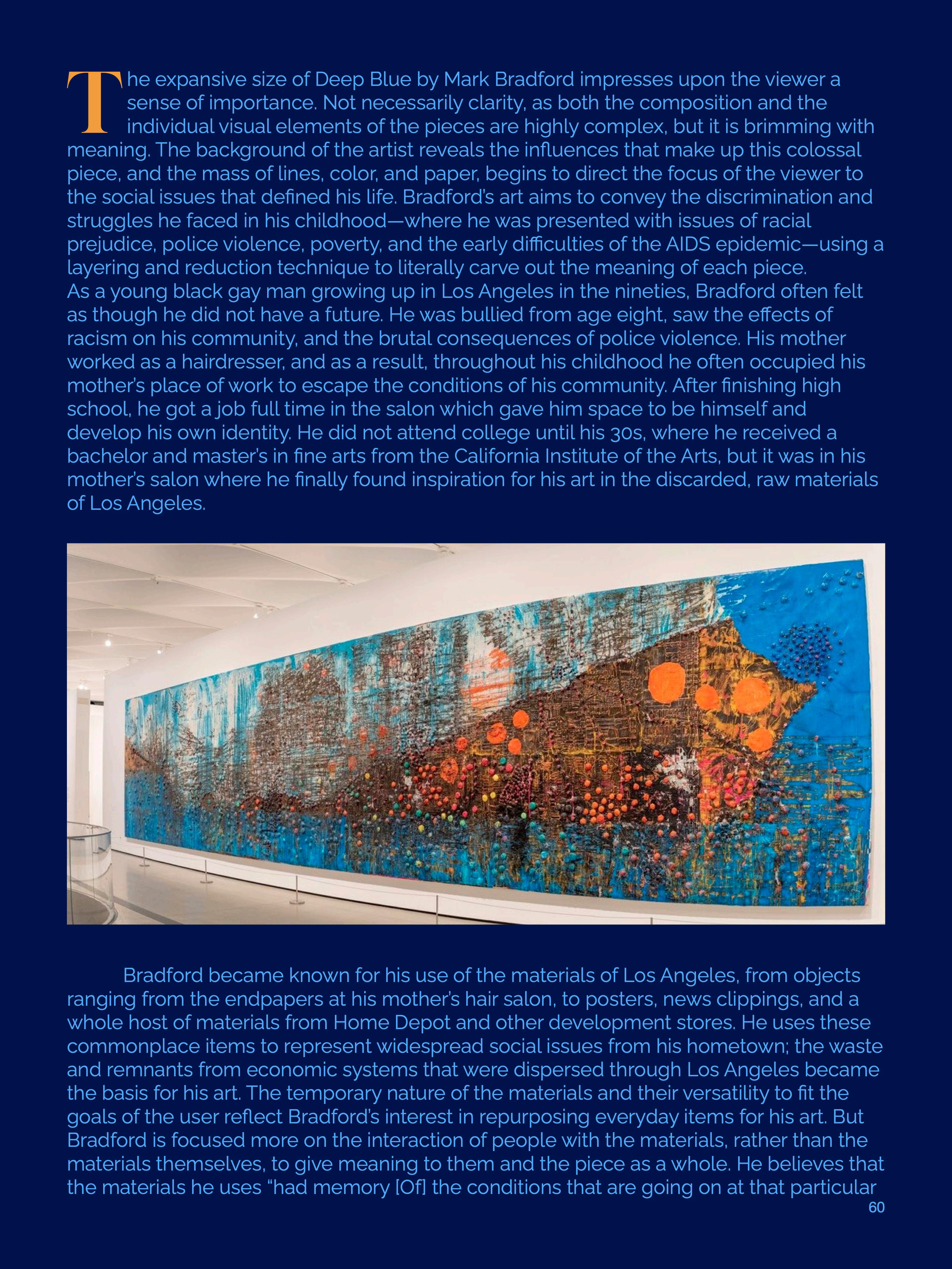

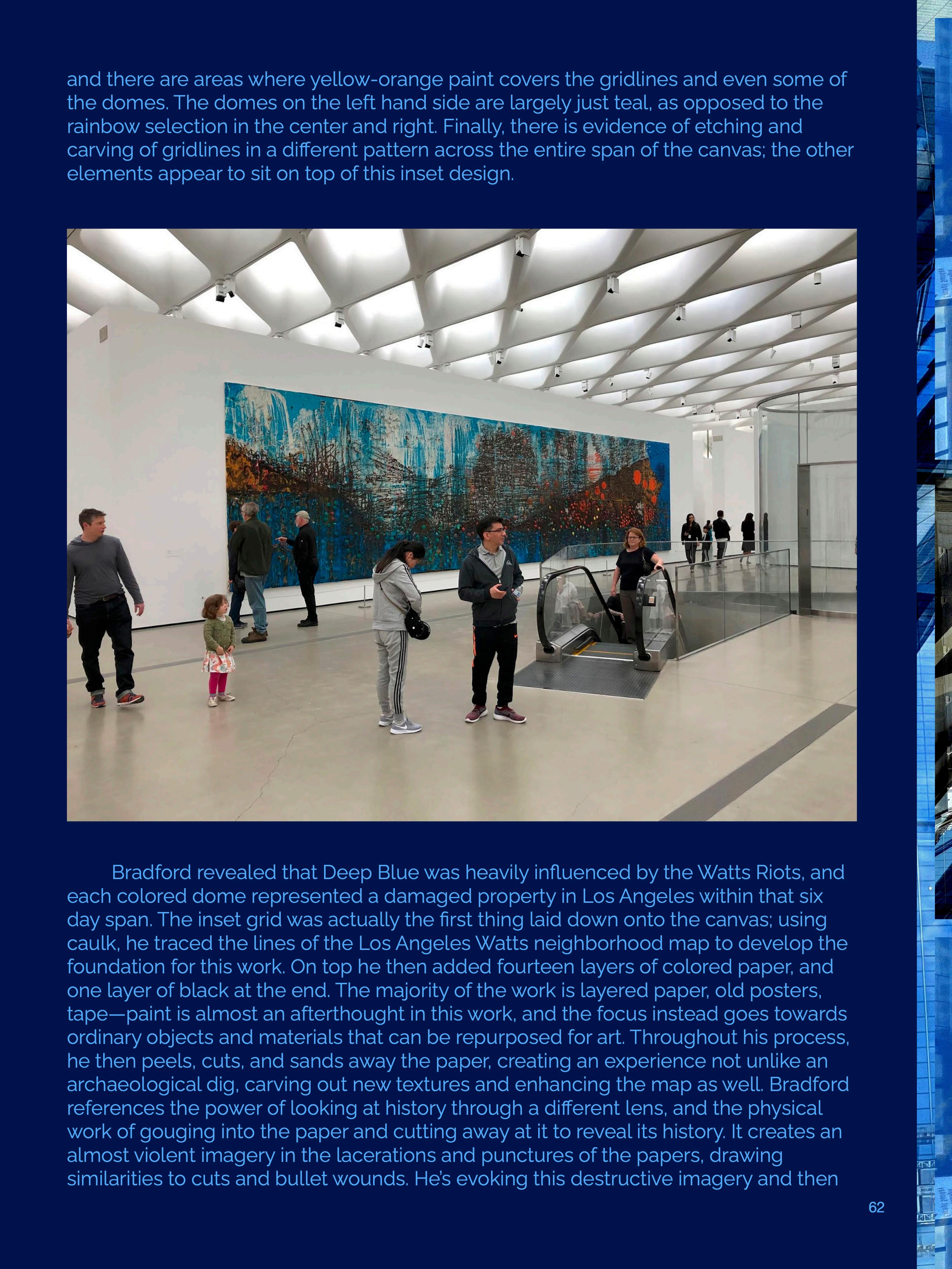

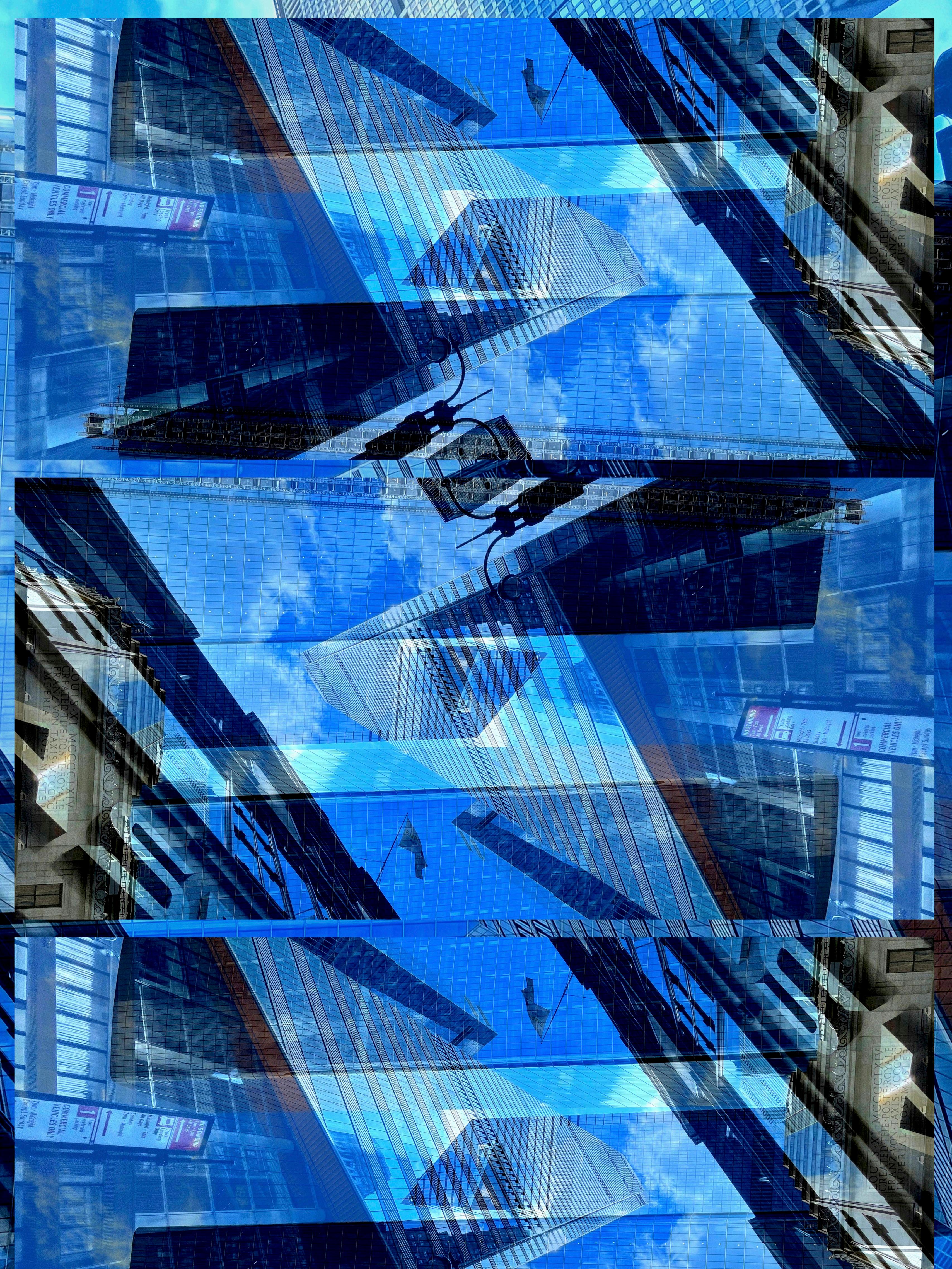

The theme of this year’s Orient Express revolves around this concept, and the pieces you just read are indicators of how resilience, tradition, and worlds & old can bring us together — and how examining culture ultimately enriches it through the spread of understanding.
Unity is more important now than ever. People are too eager to jump at each other, to bring each other down, rather than to strive for unity and healing. The biggest barrier to this mission is understanding each other’s identities and sharing them in forums like The Orient Express. The magazine gets its name from the 1800s train that linked Asia and Europe, bringing identities together across thousands of miles. In a way, the magazine serves a similar purpose: to transport stories that have yet to be heard across the barriers of understanding.
We hope you’ve enjoyed the journey of identity that this year’s magazine has centered around. With more articles and featured artists than ever before, the 2023 edition is truly our purest expression yet of the creativity of Brunswick’s student body and the stories they hold. And, for the first time, we included high-level examination essays from AP students that elevate the content of the magazine even further.
The magazine is, more than anything, a passion project for the student body. To the outside, it’s a place where stories and identities converge, but within Brunswick, it’s a place where people converge. It’s a place where everyone can bring something to the table. The literary community merges seamlessly with the visual arts community, while bringing in people from all backgrounds. We are an inclusive publication. Everyone has a place.
It’s because of these qualities that this year’s theme is so appropriate — it describes the goal of not just the writers, not just the reader, but the world. It’s not I, it’s not you — it’s we. It’s our identity, and it’s our moment of unity through literary and artistic excellence.
So, in conclusion, as we part ways, we hope to see you again — until then, keep striving to know each other’s past, to embrace each other’s future, and to understand each other’s identity. The world depends on it.
Sayah Trahanas Editor-in-Chief